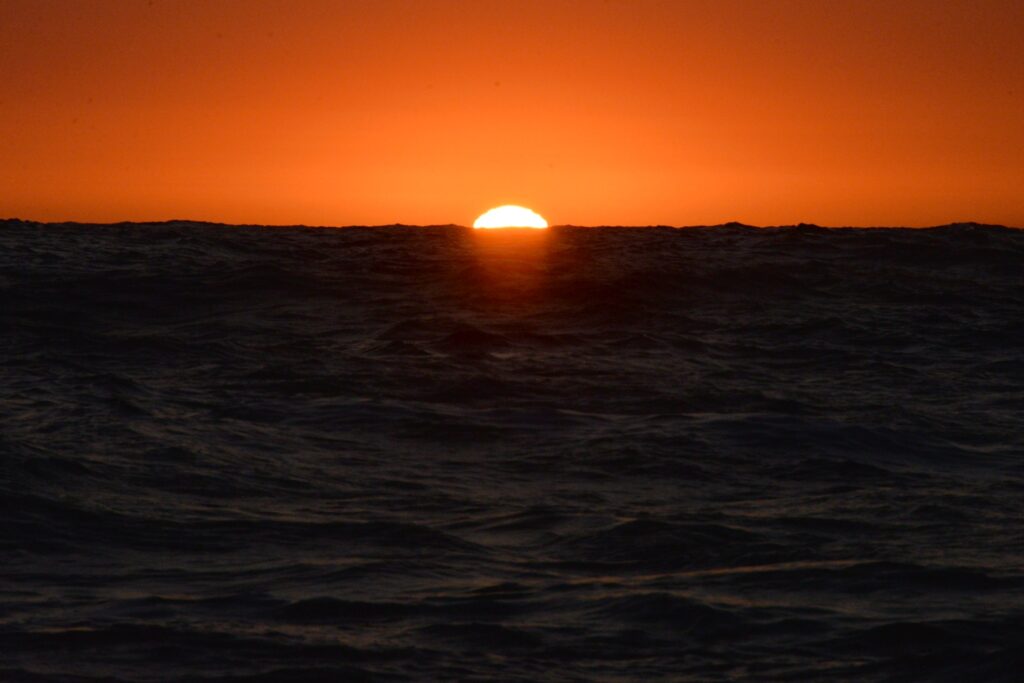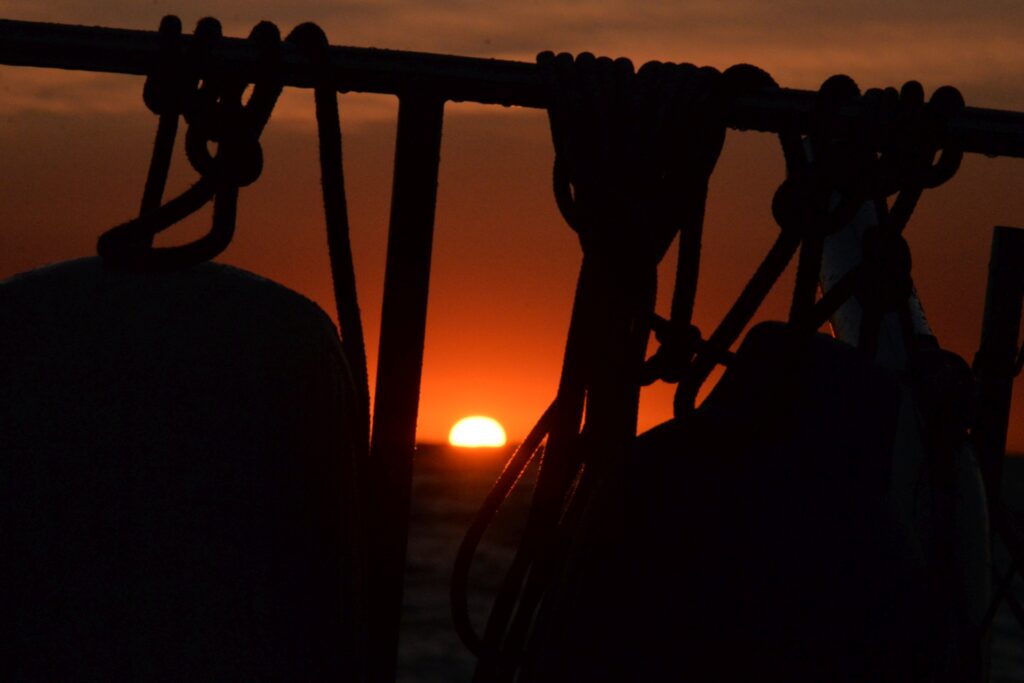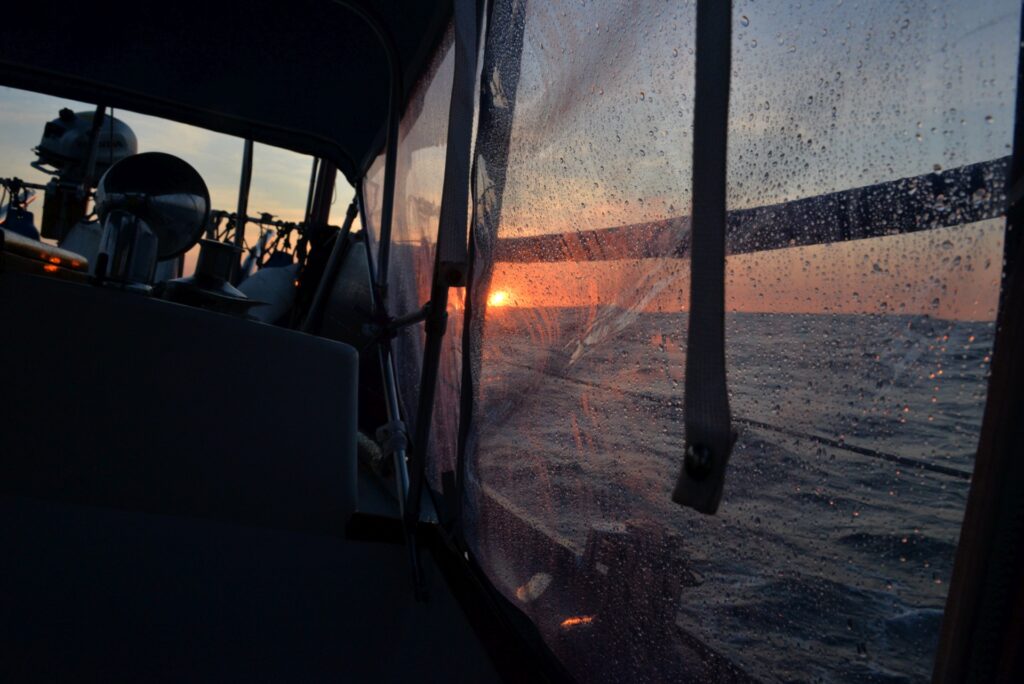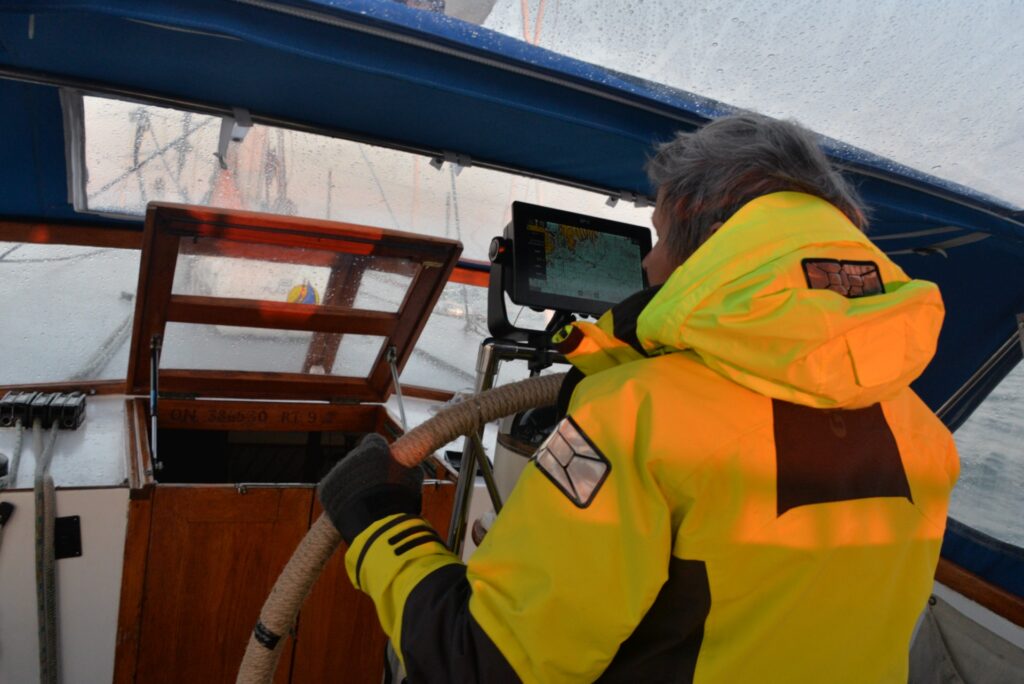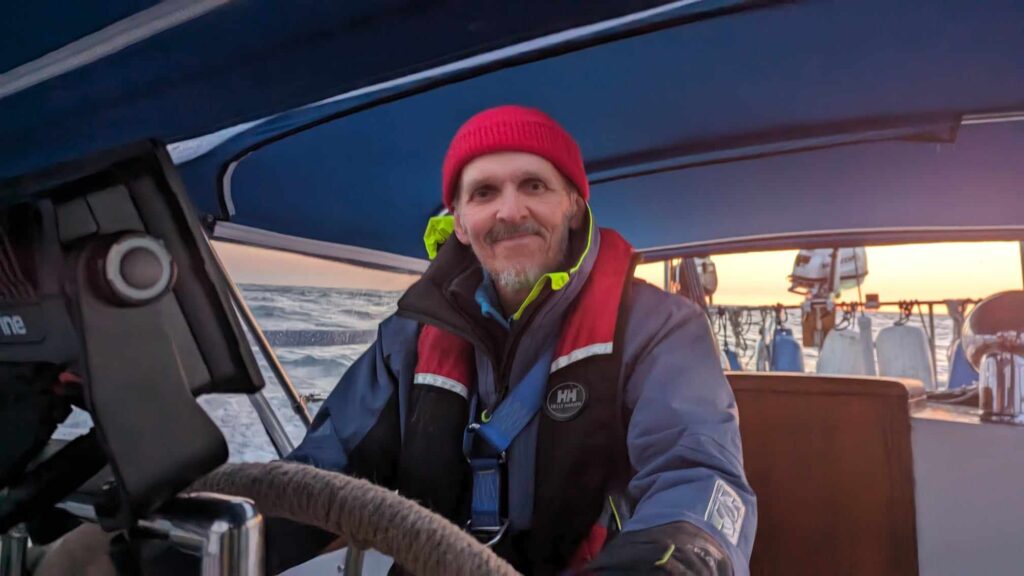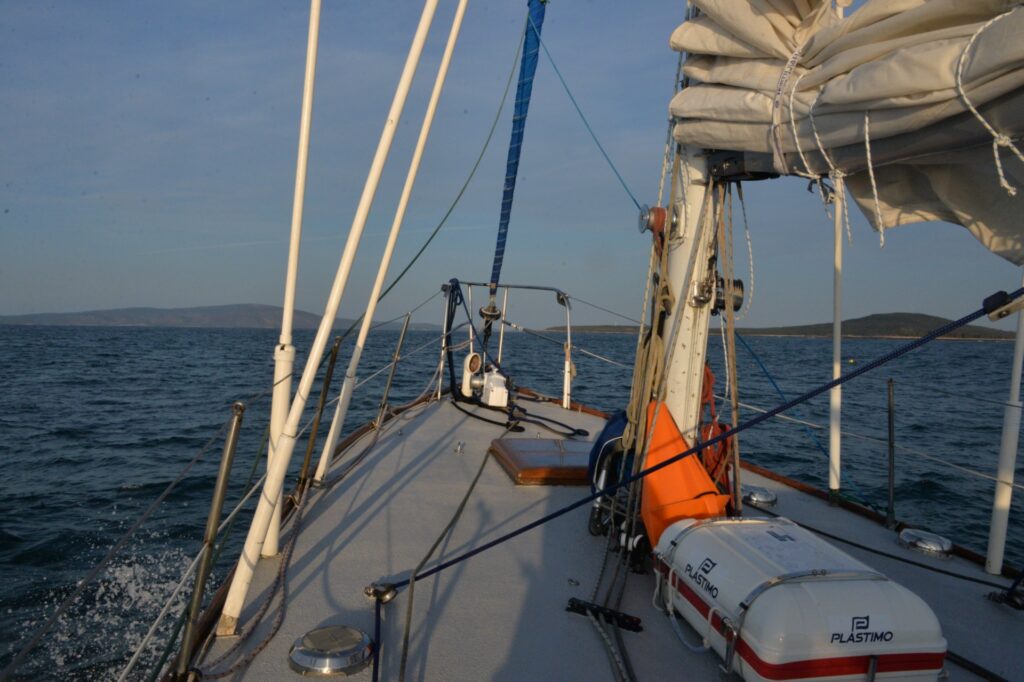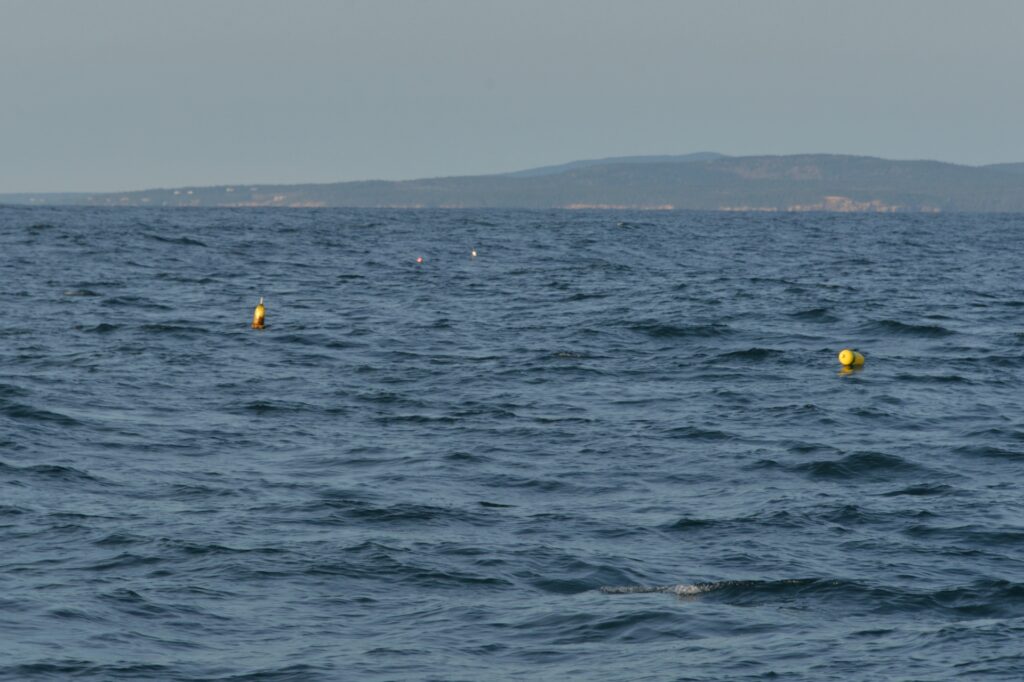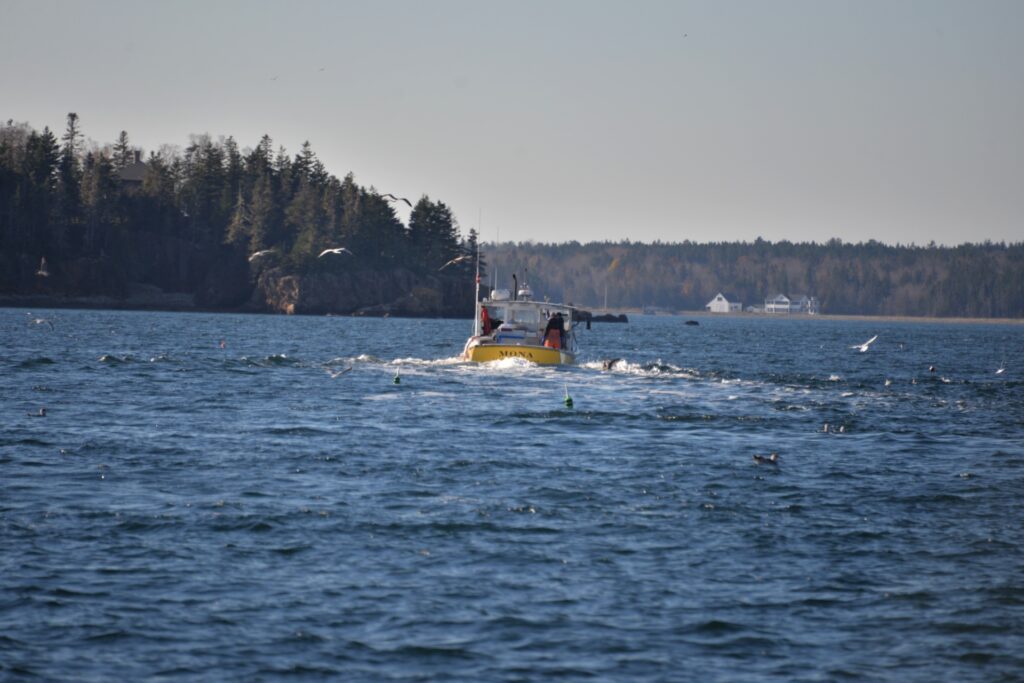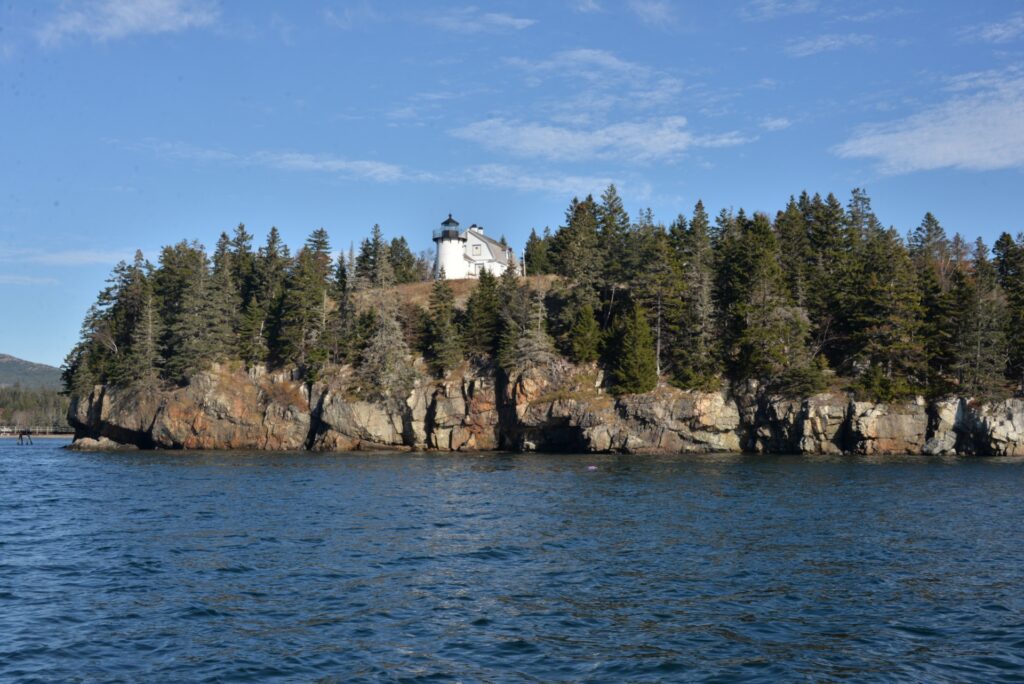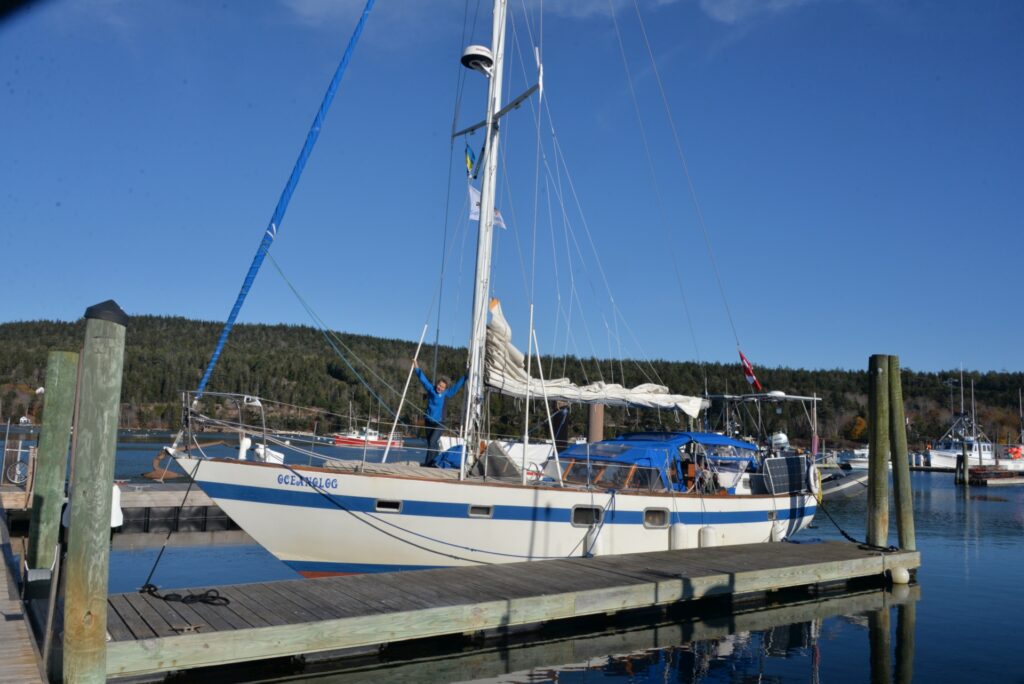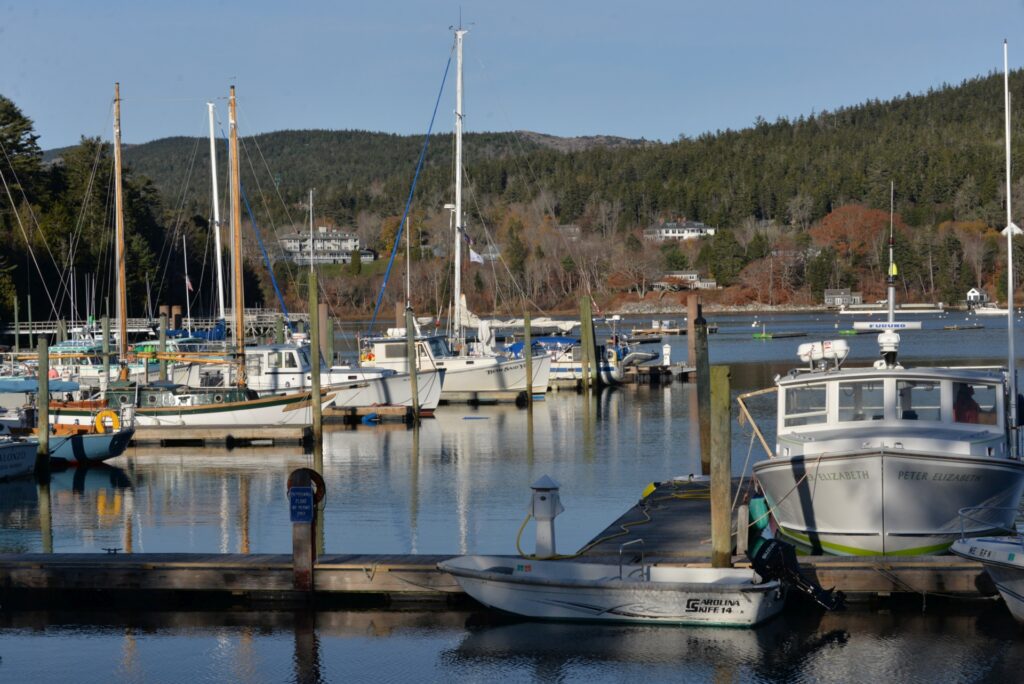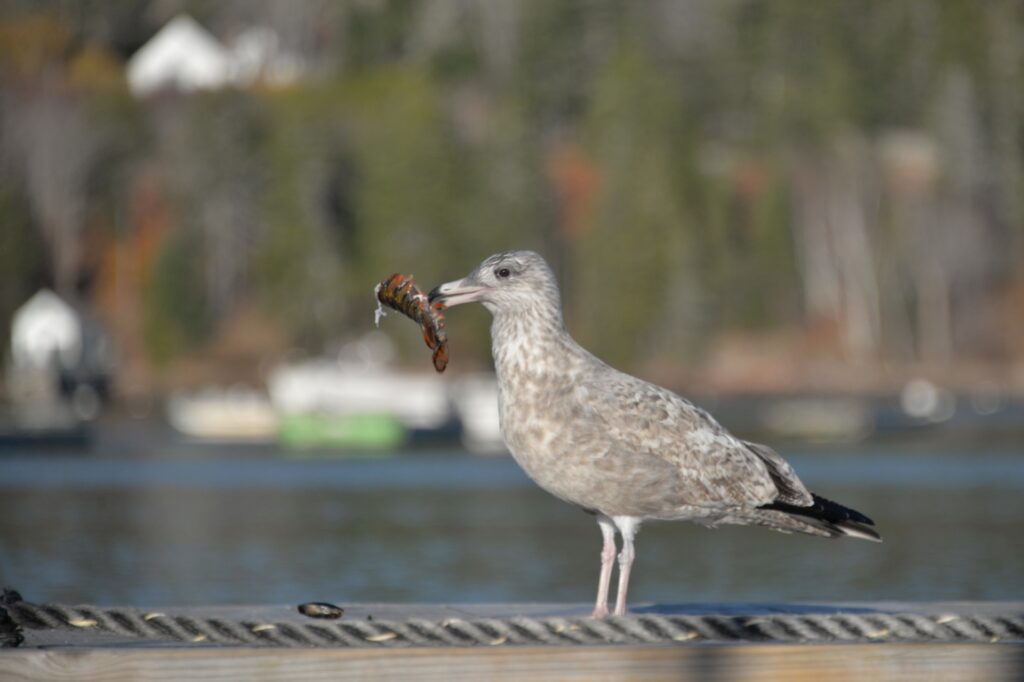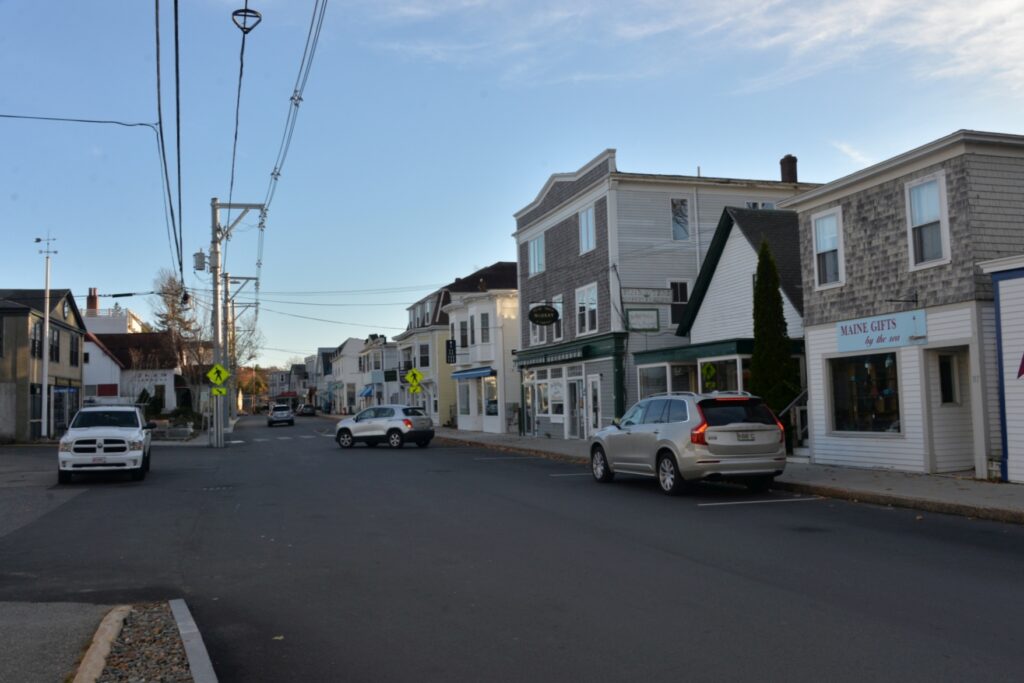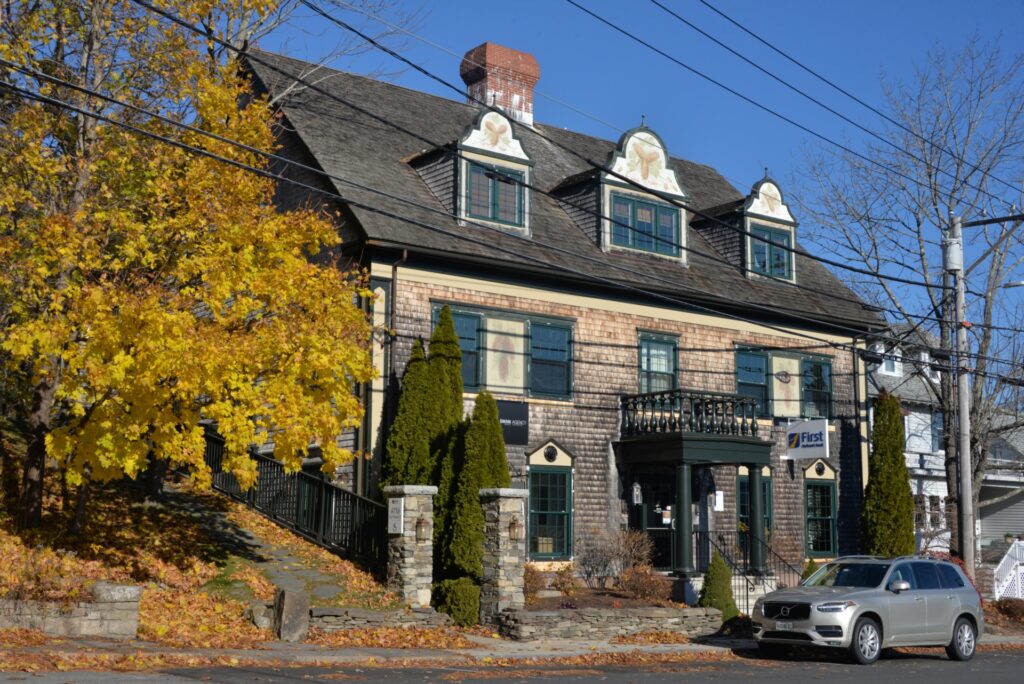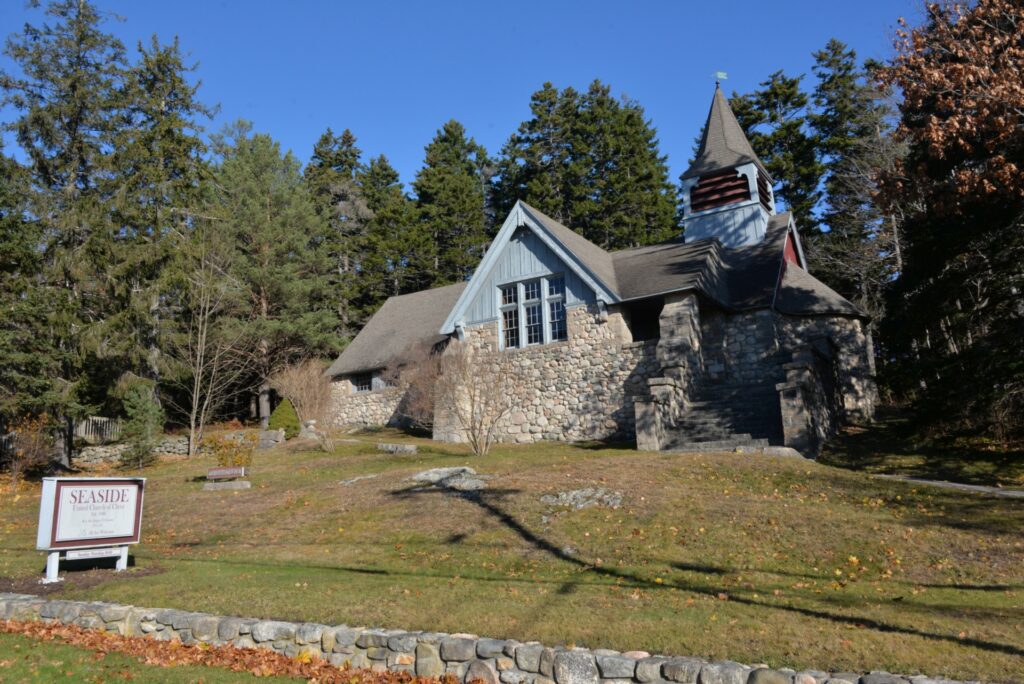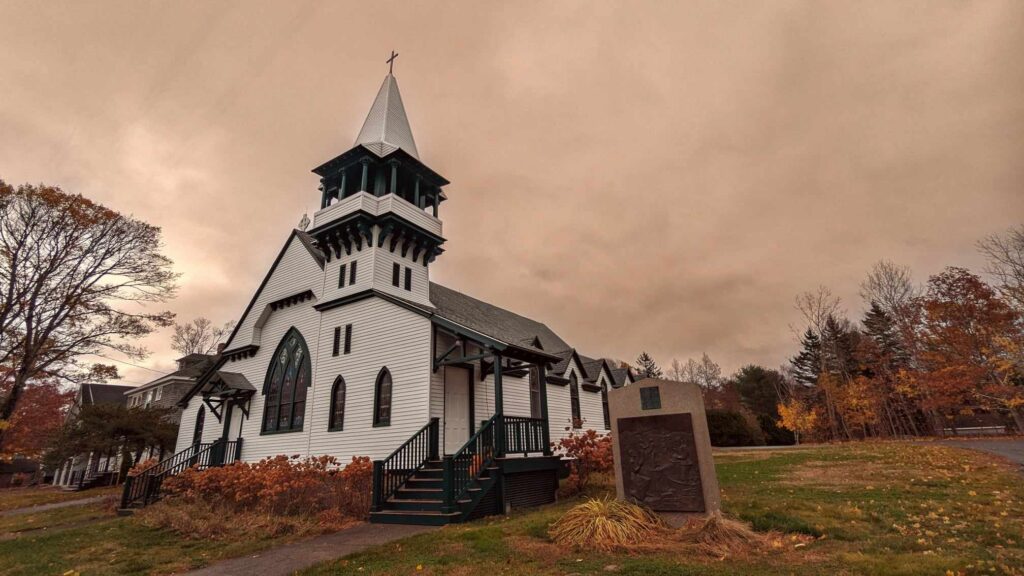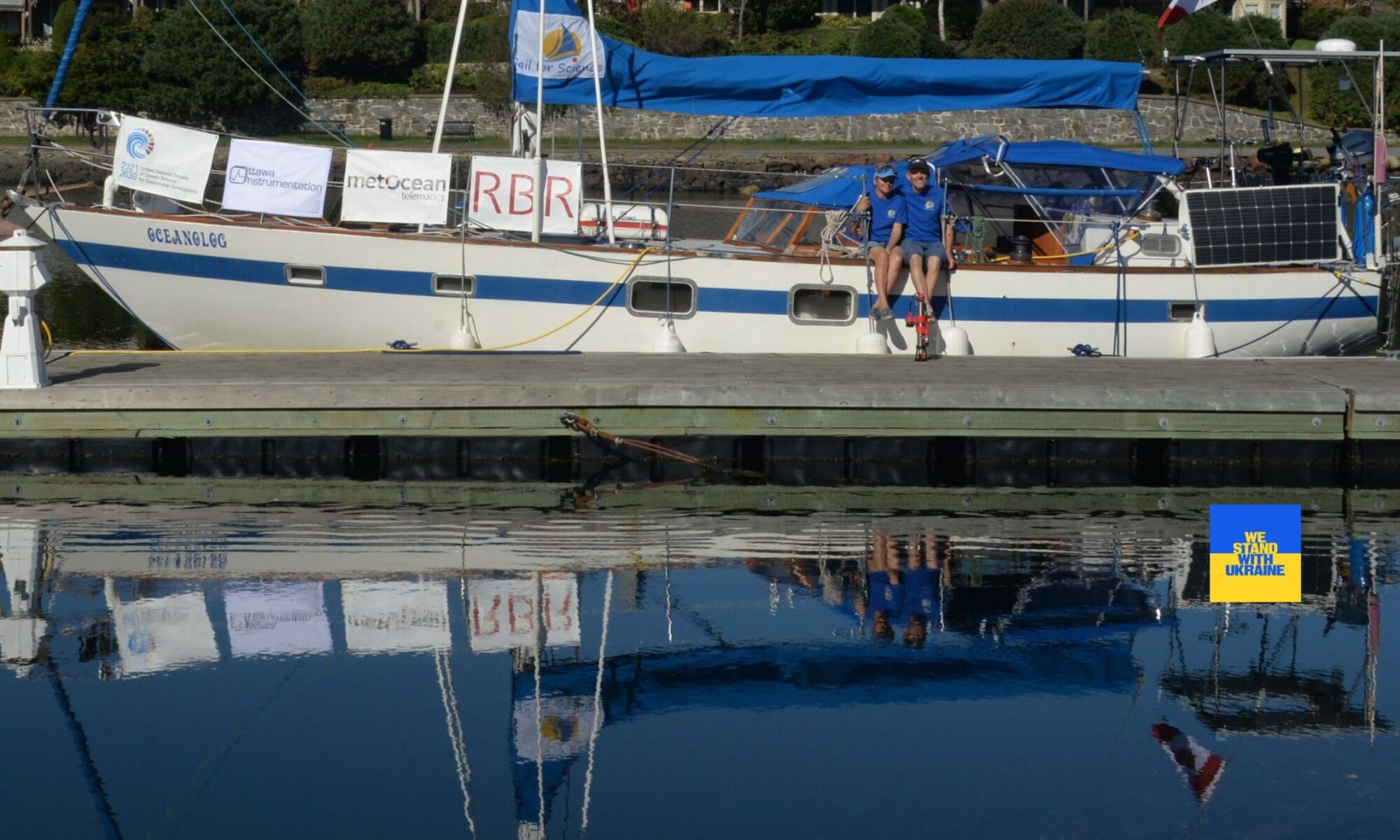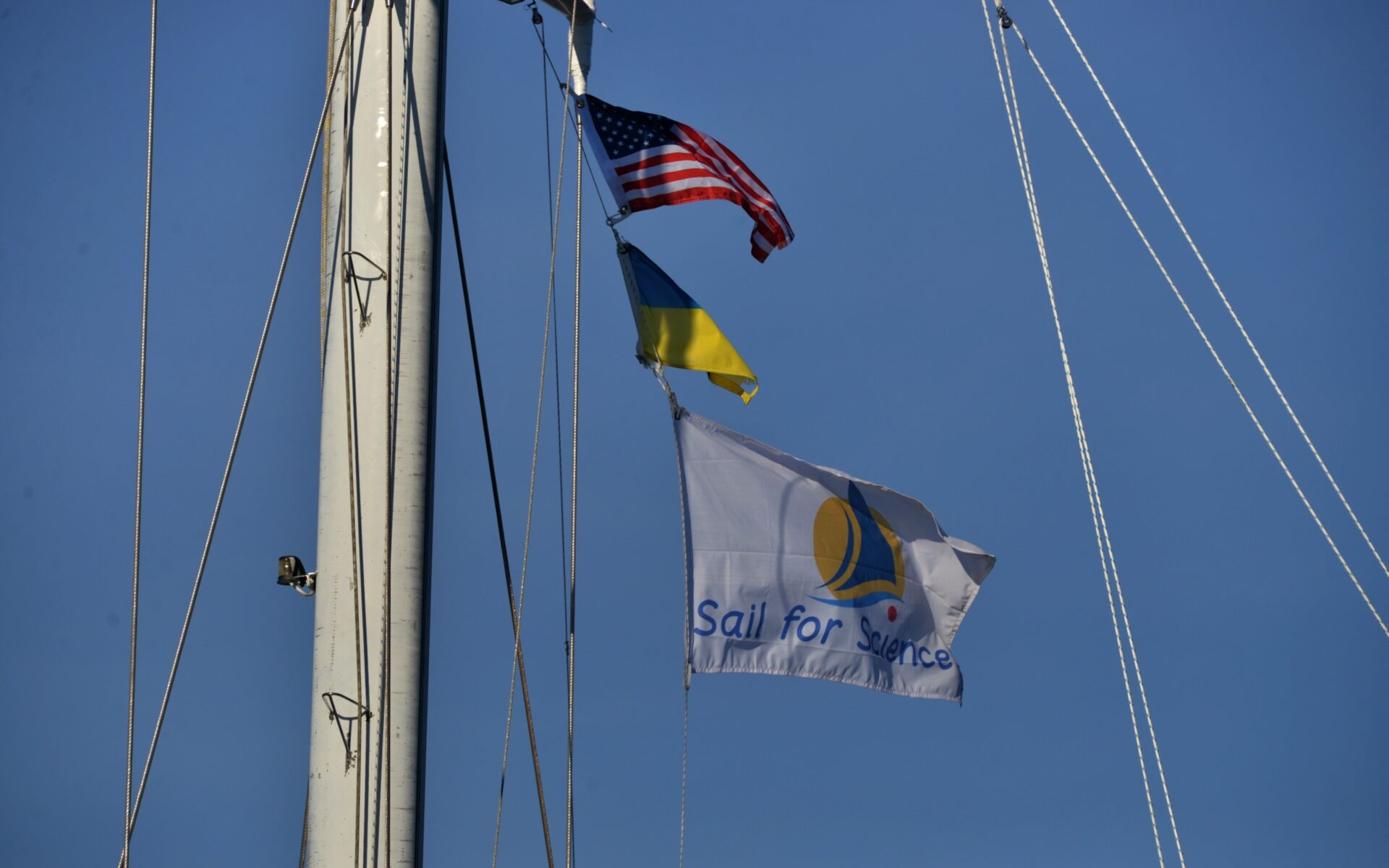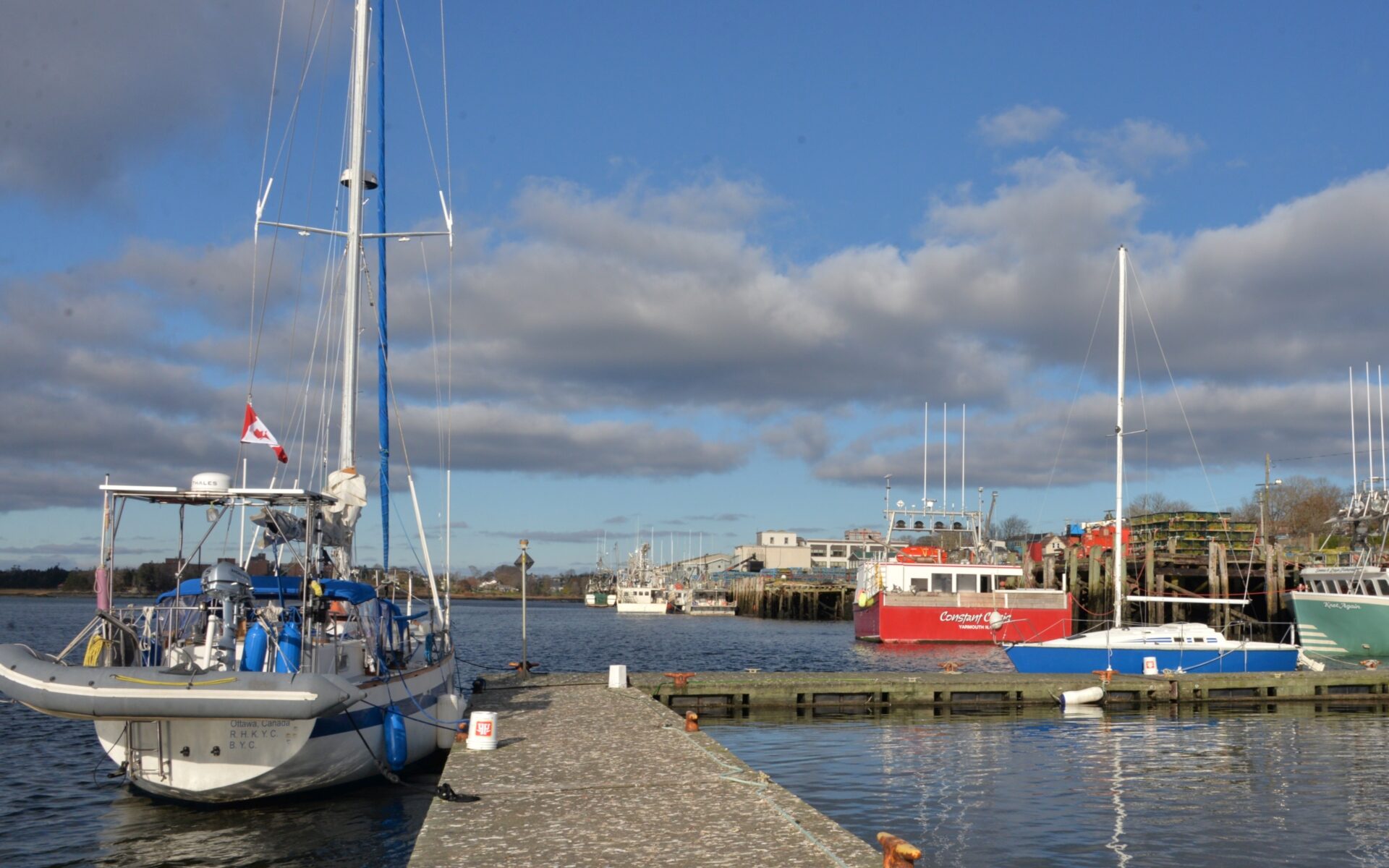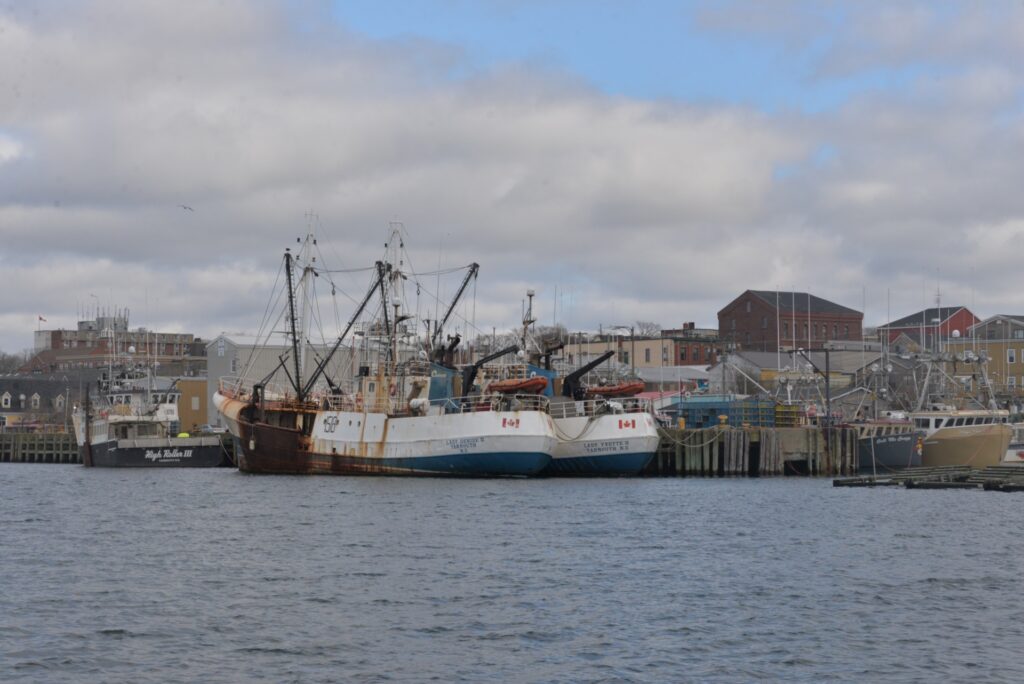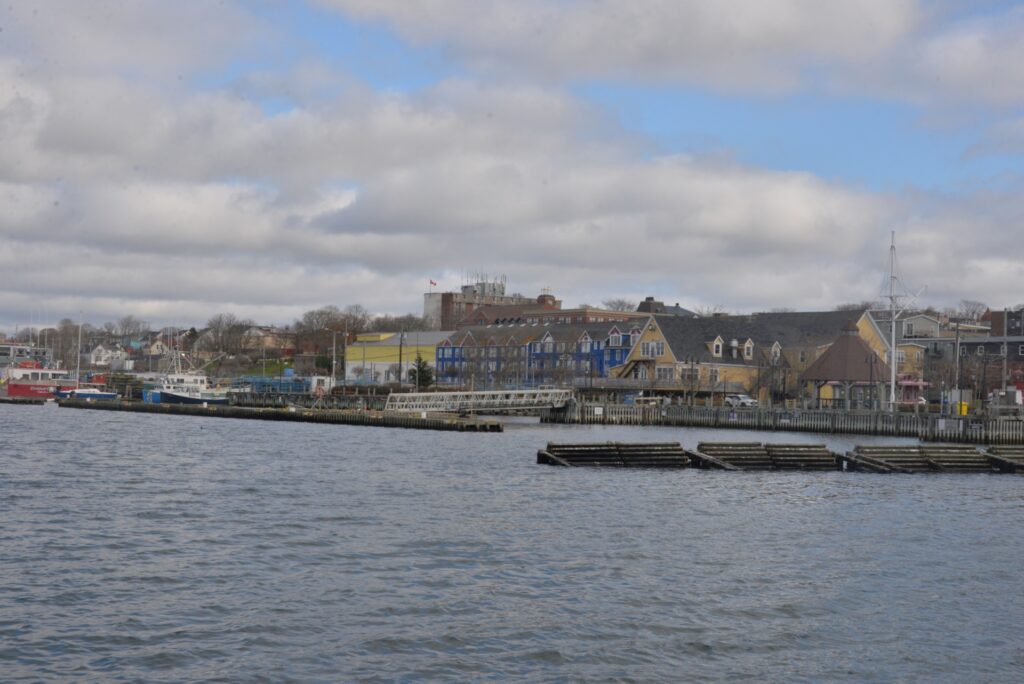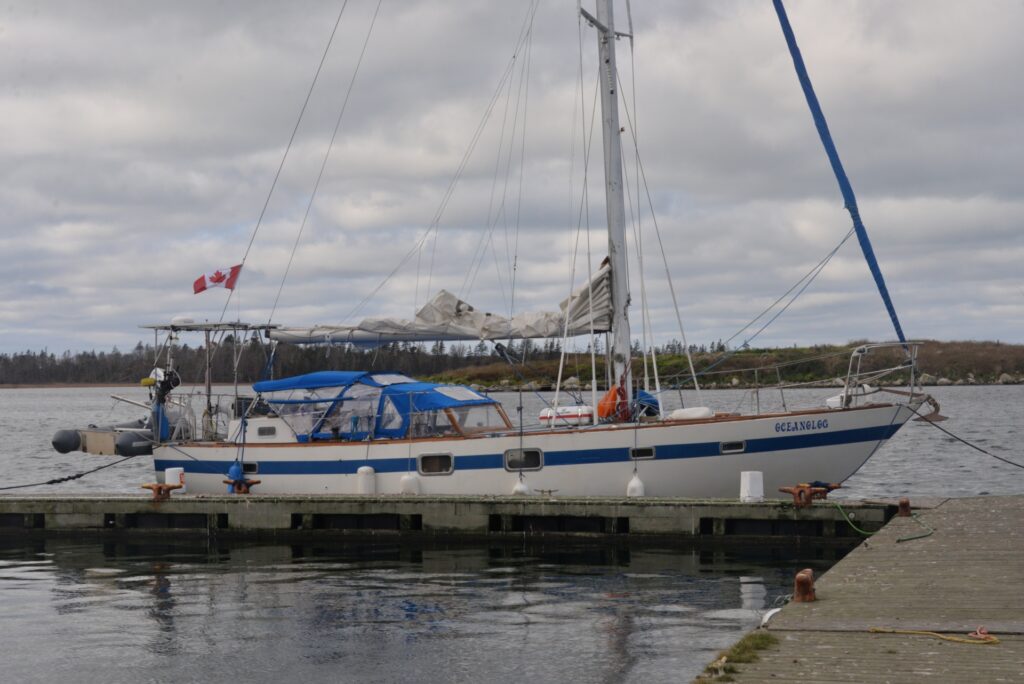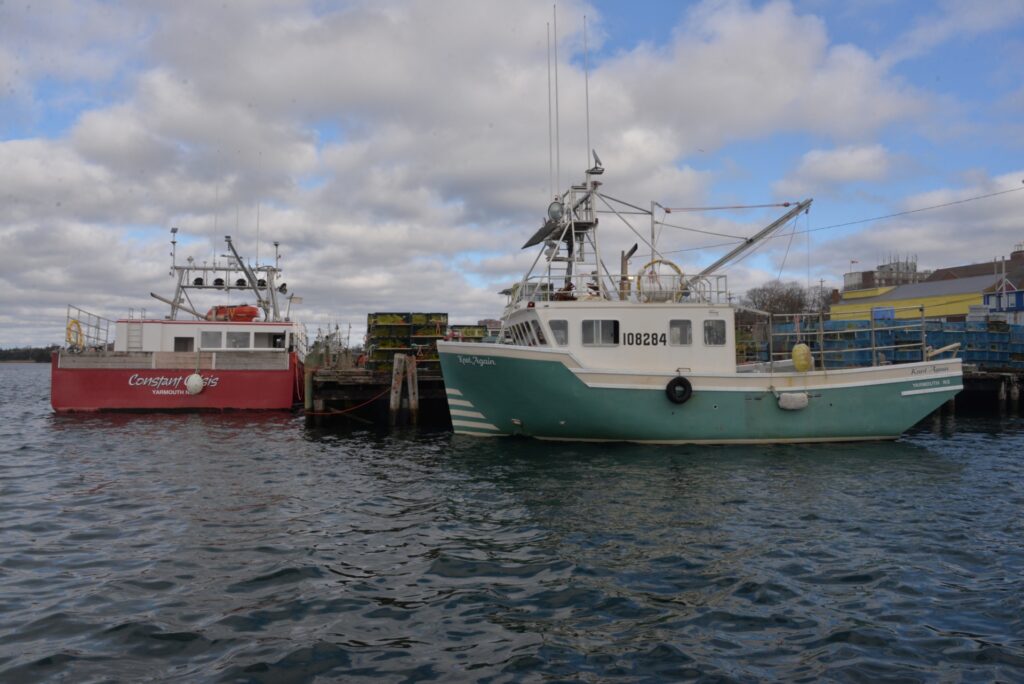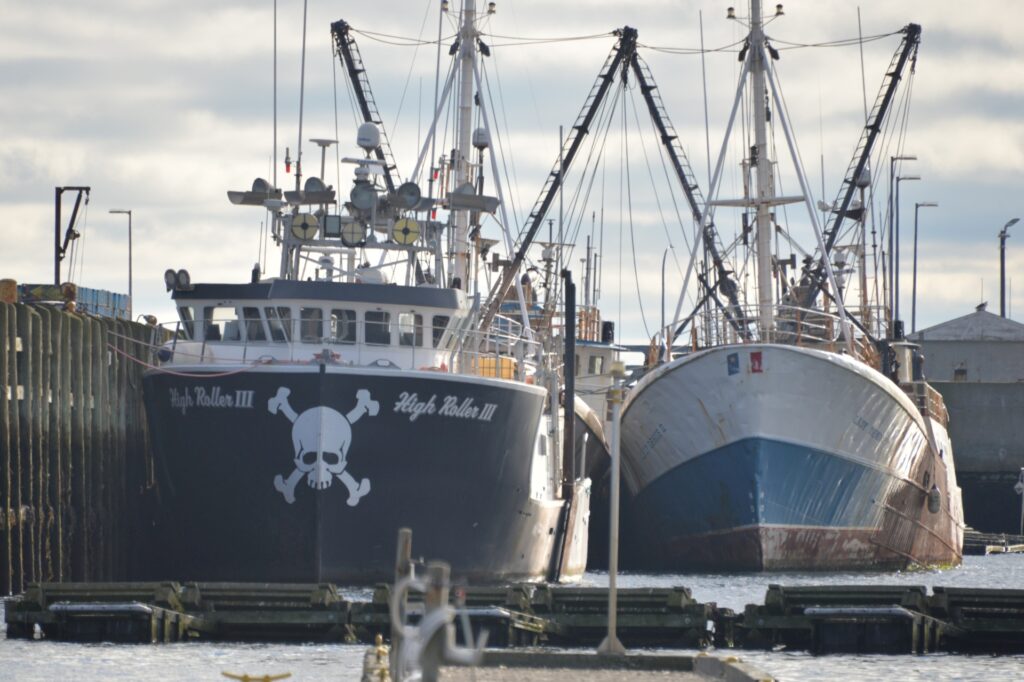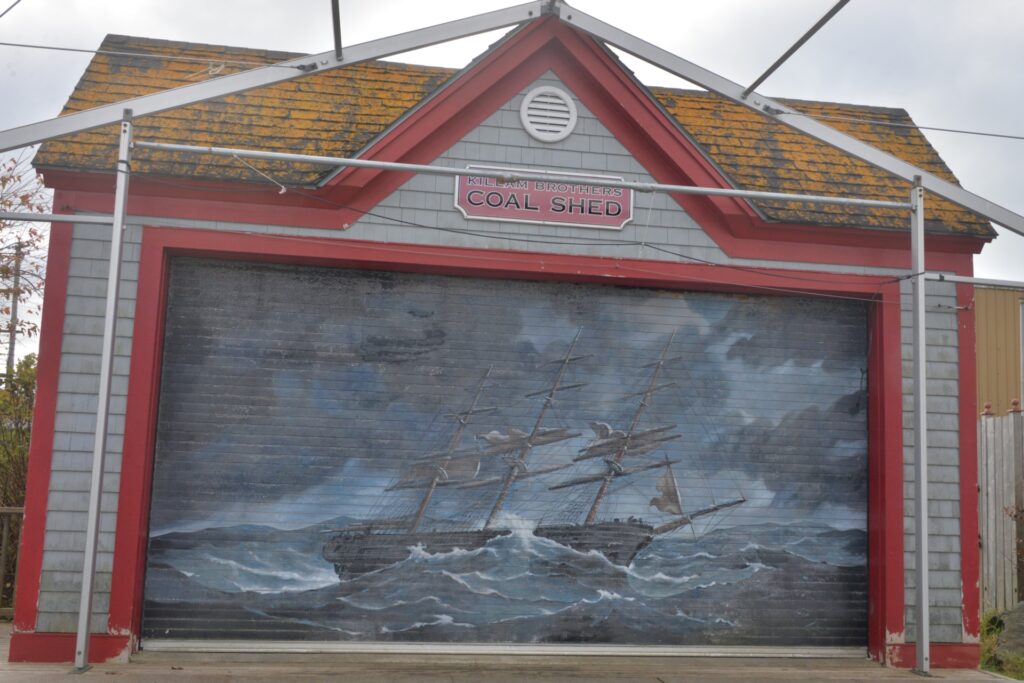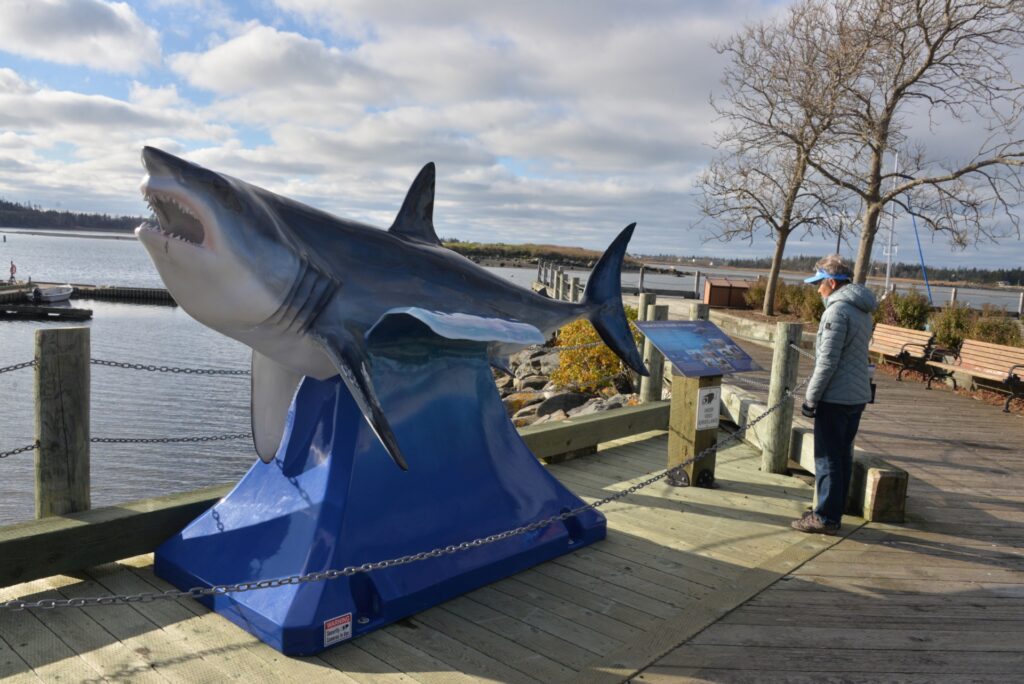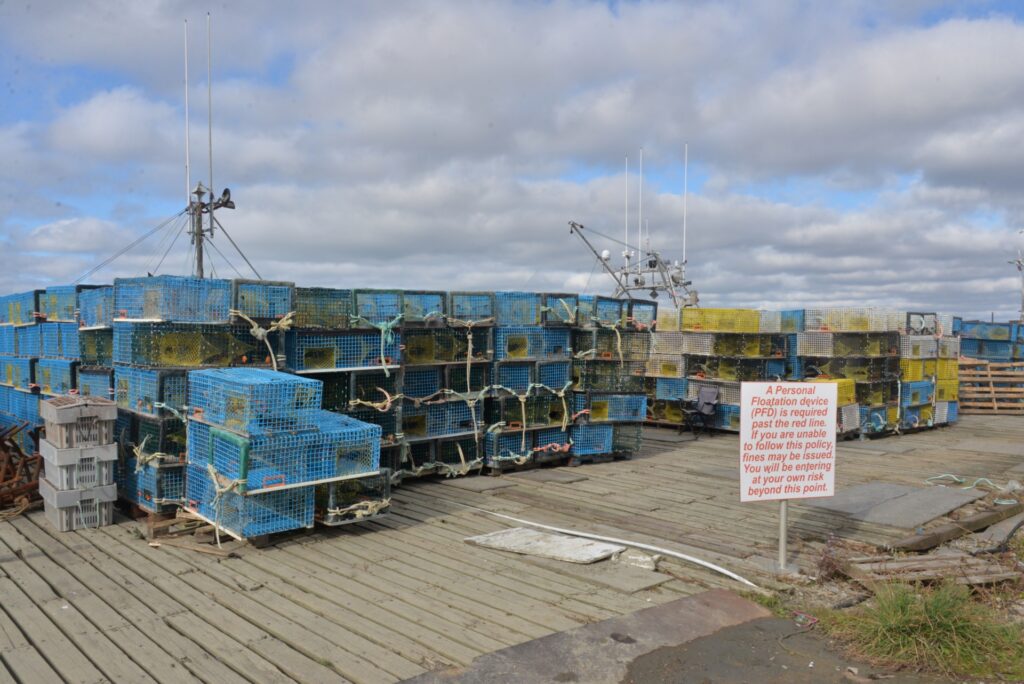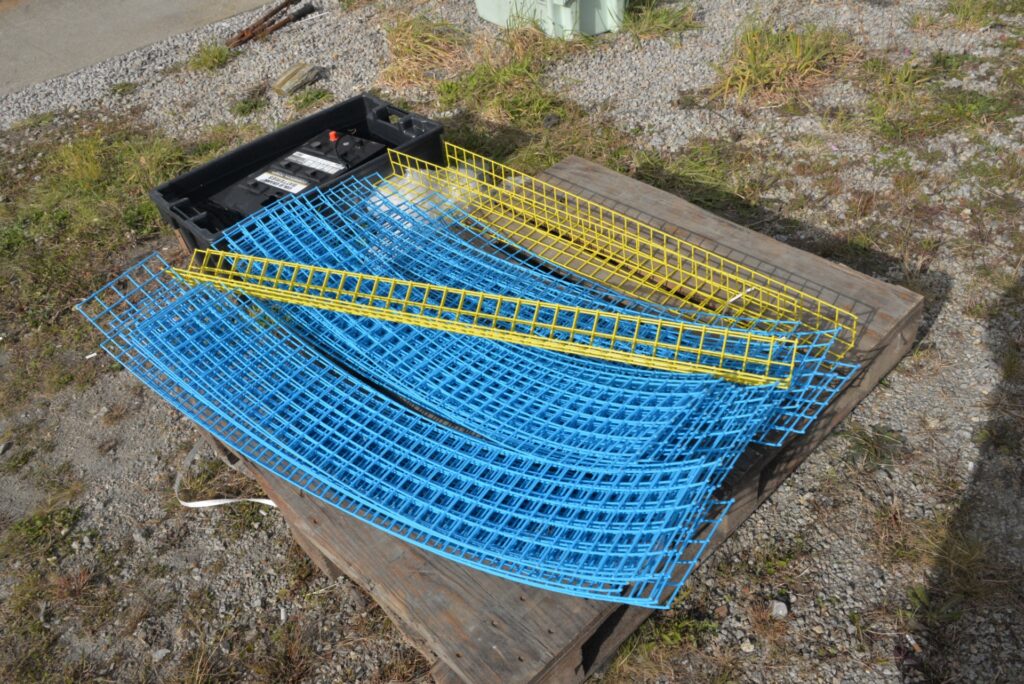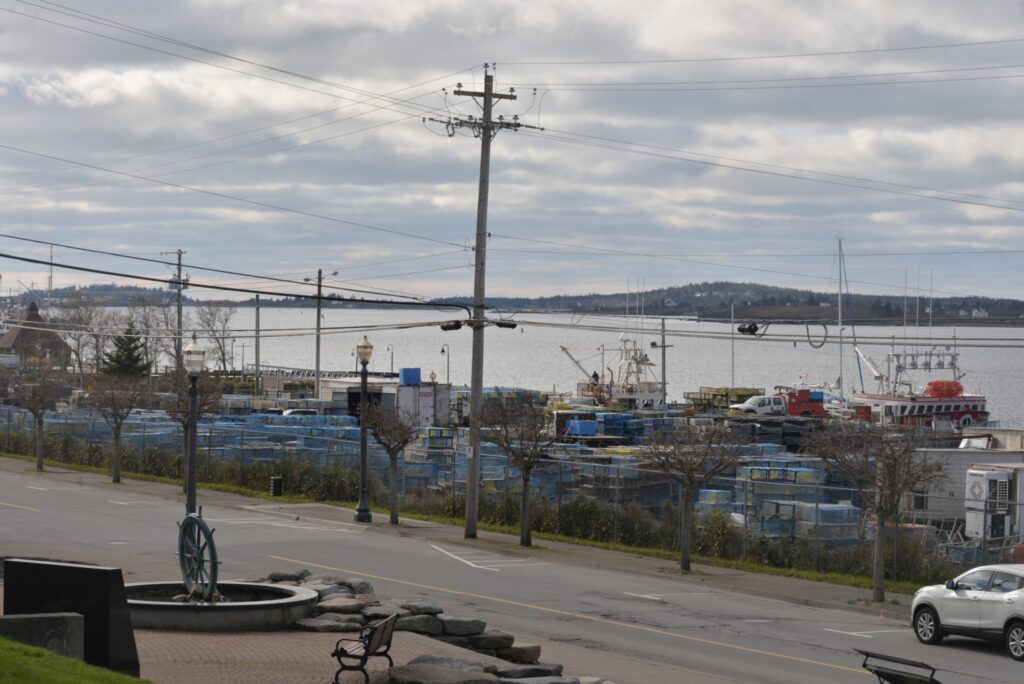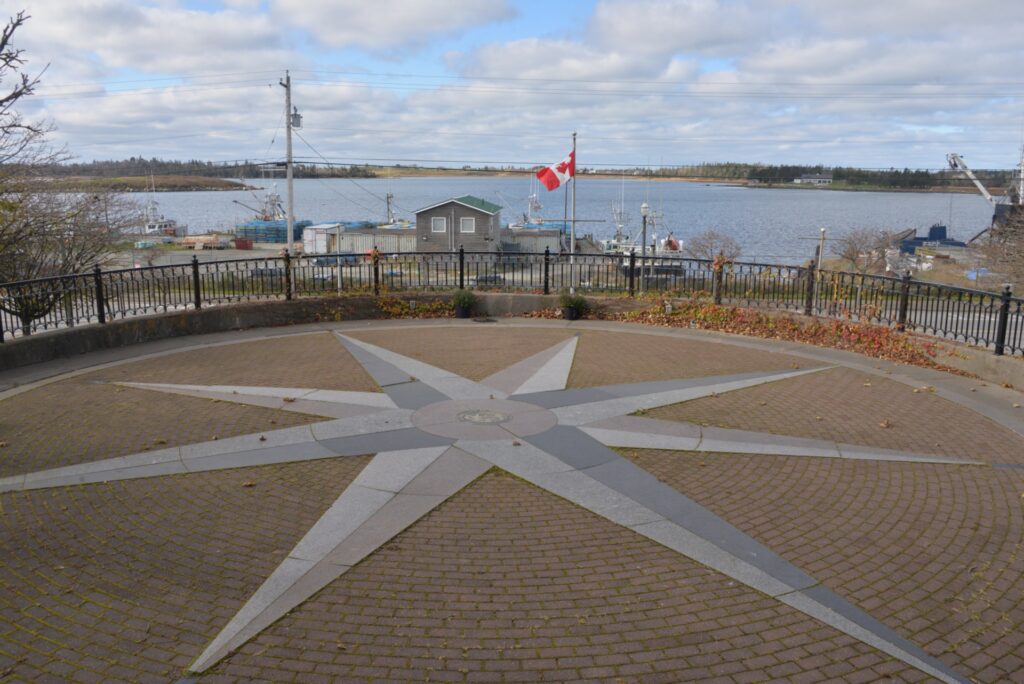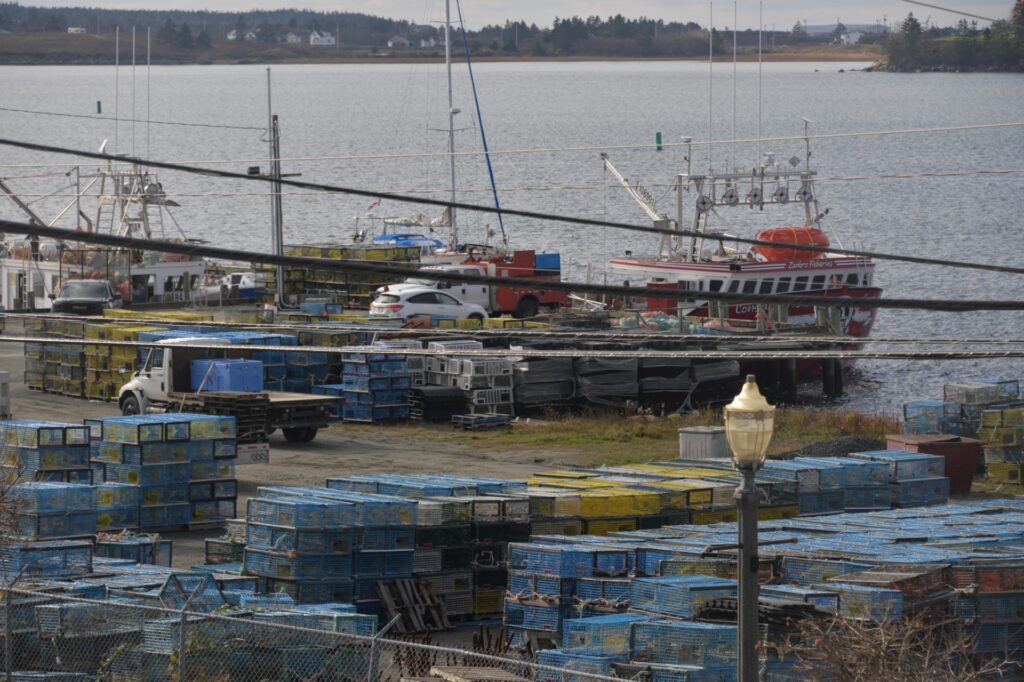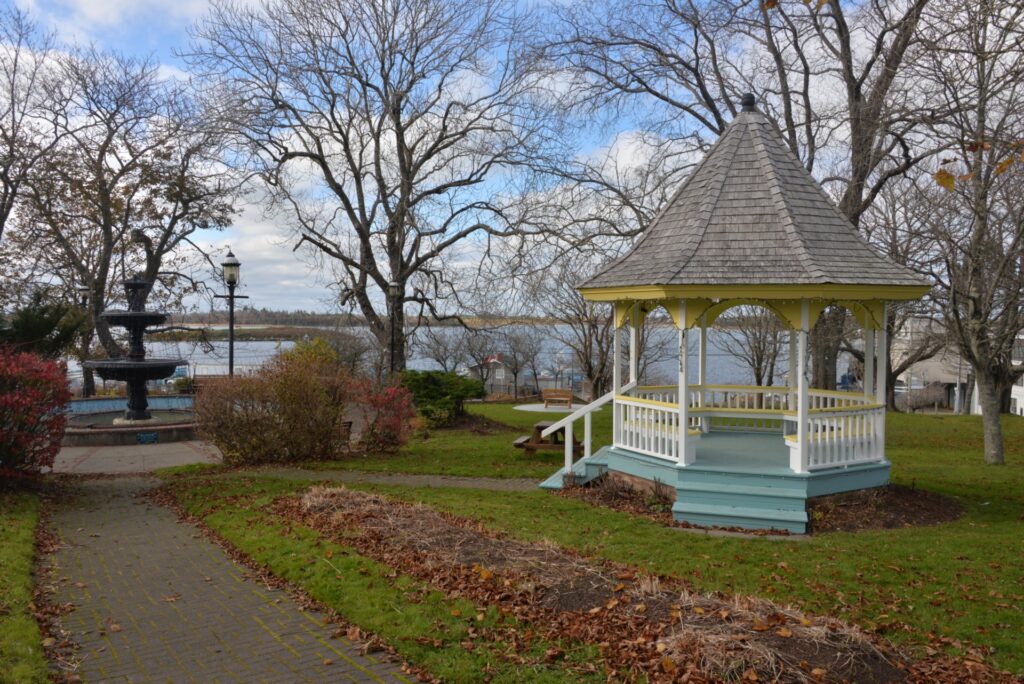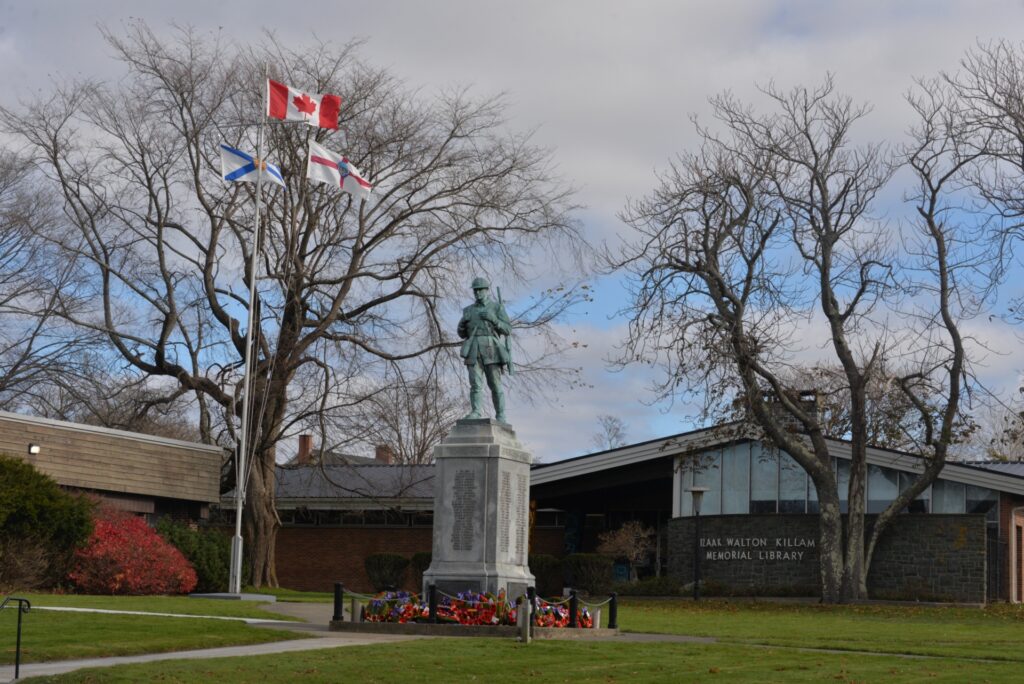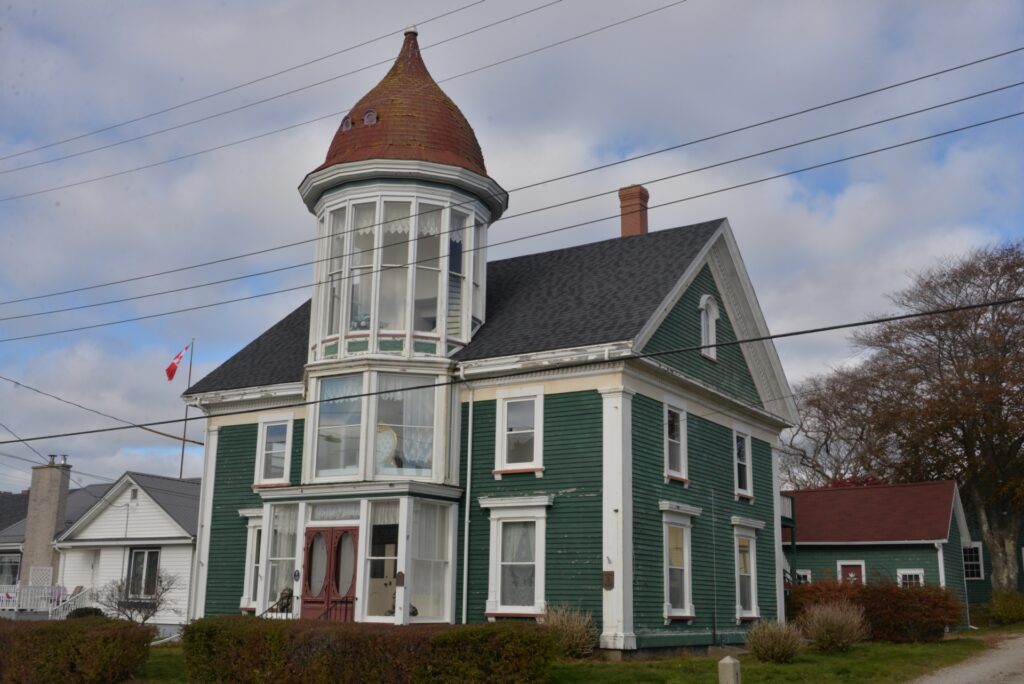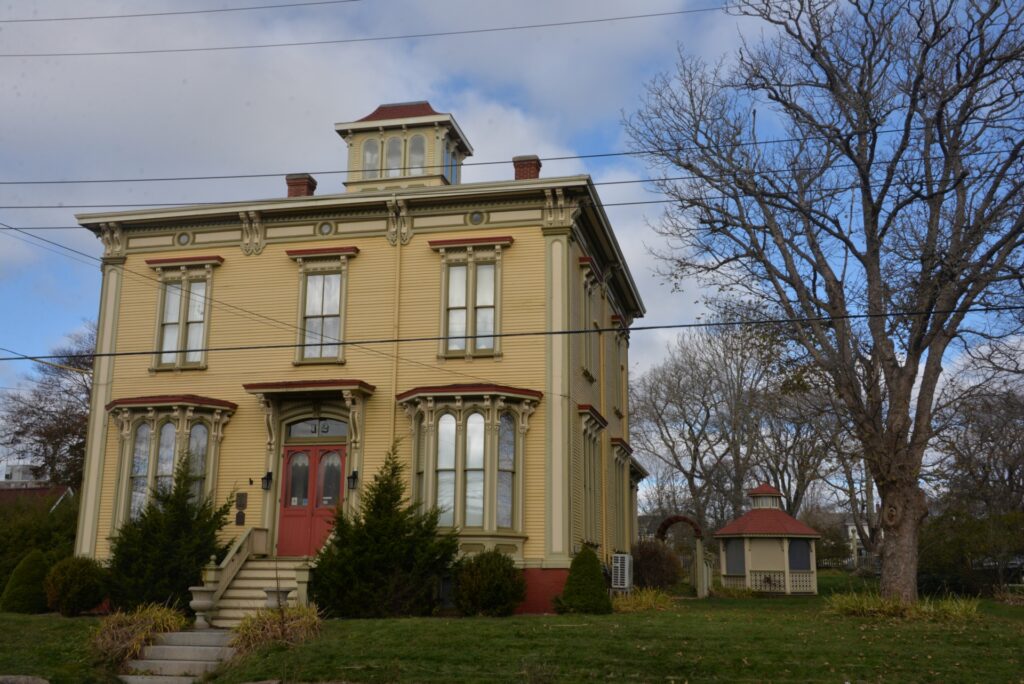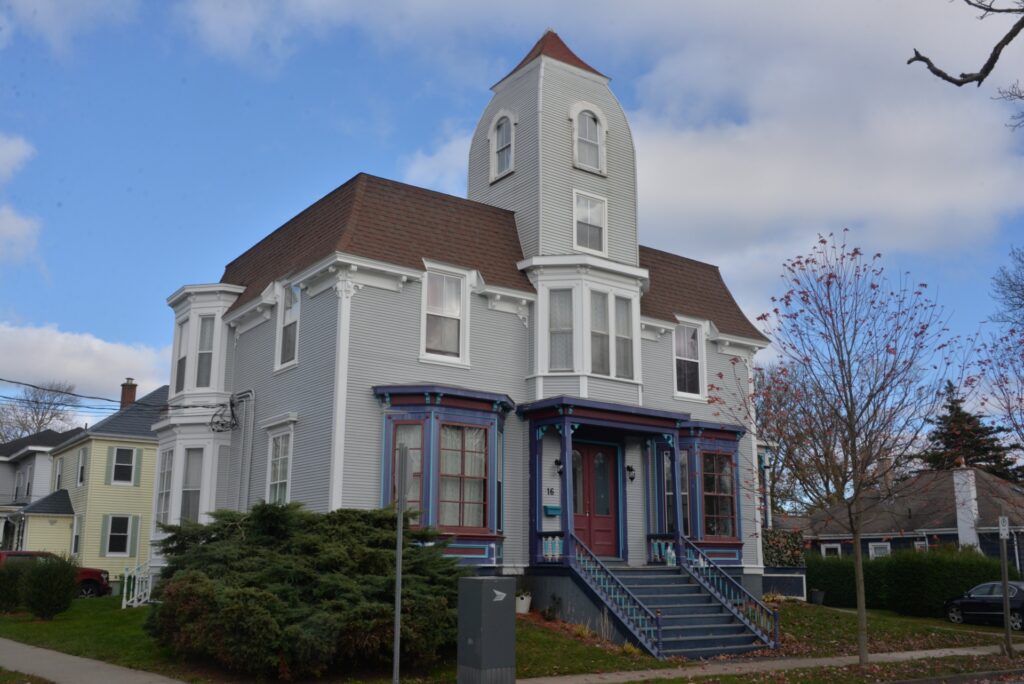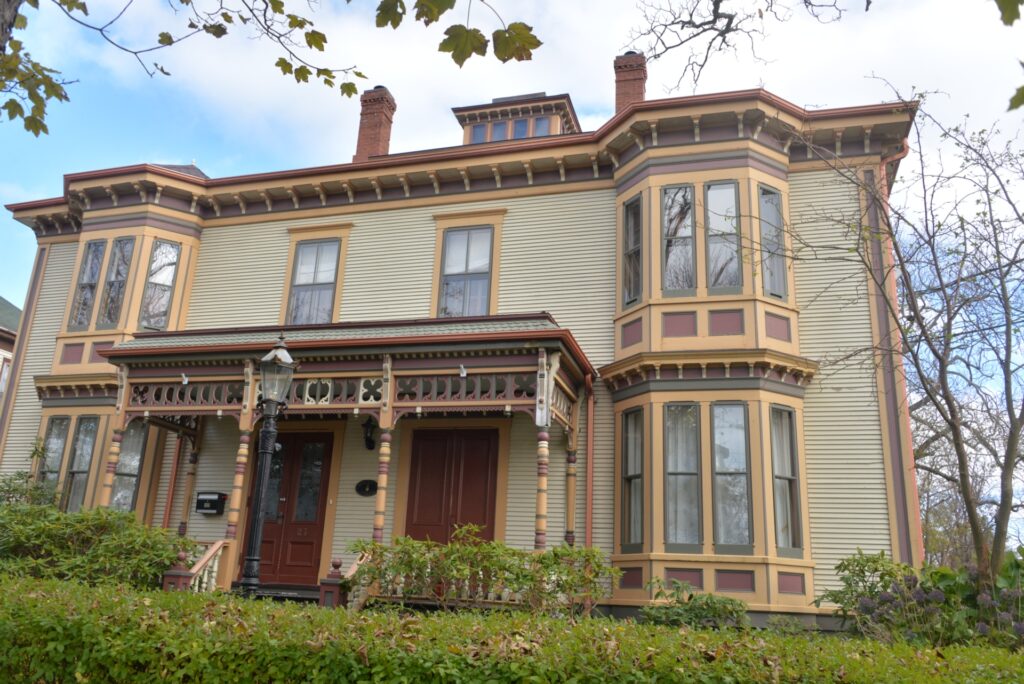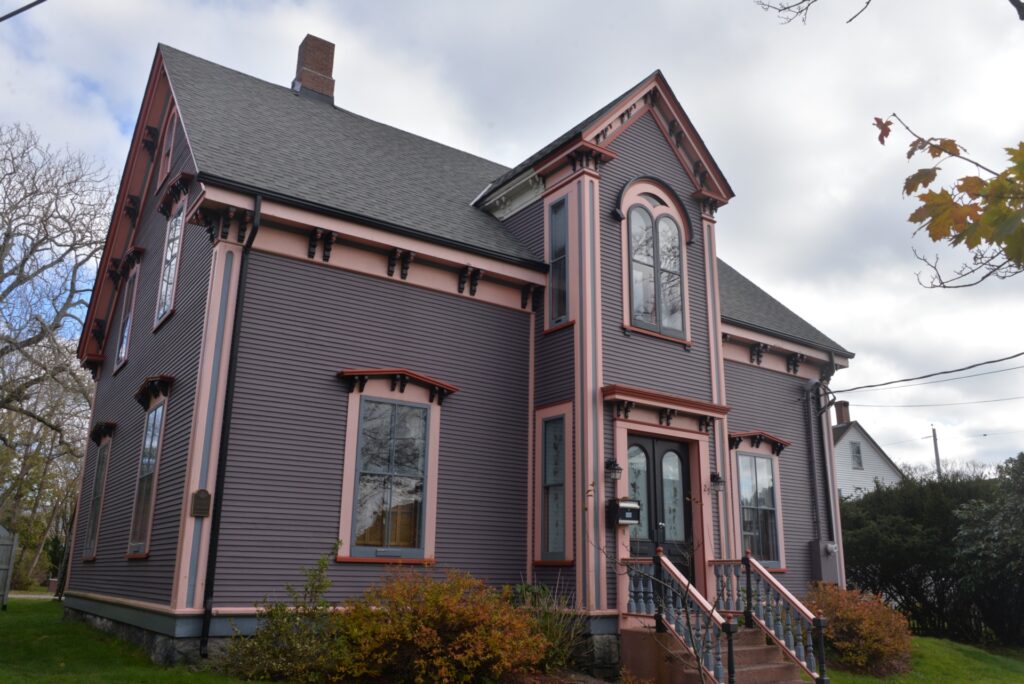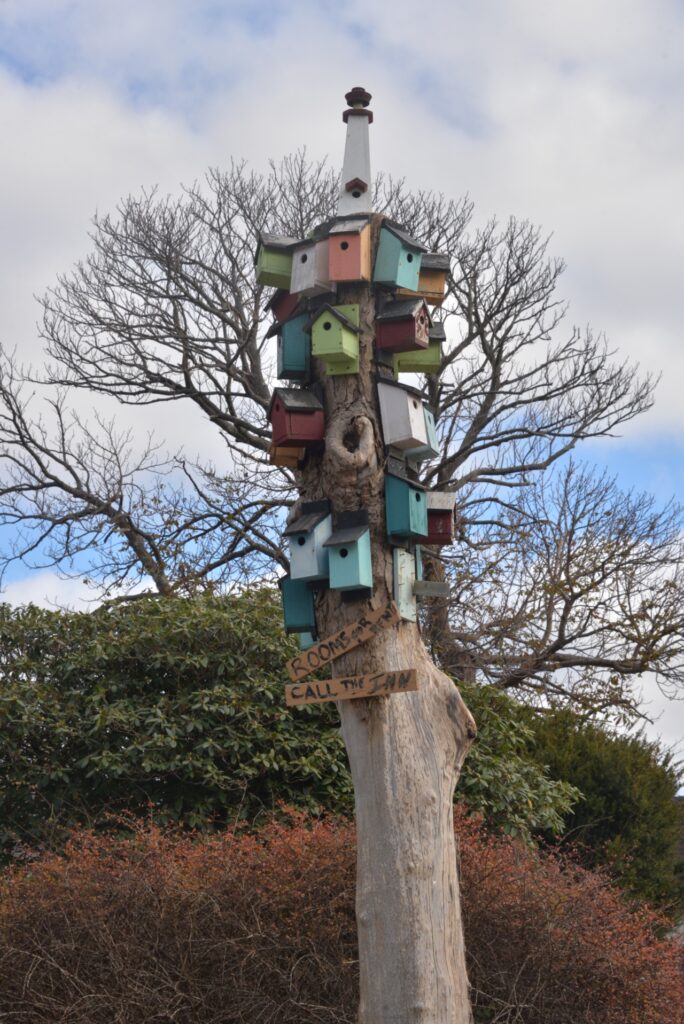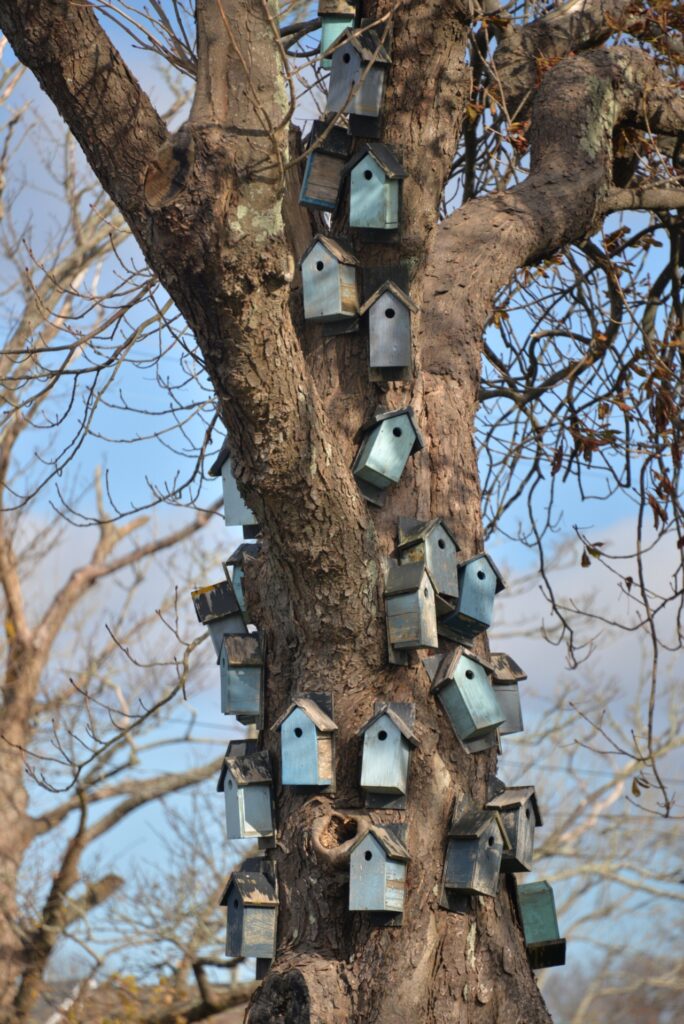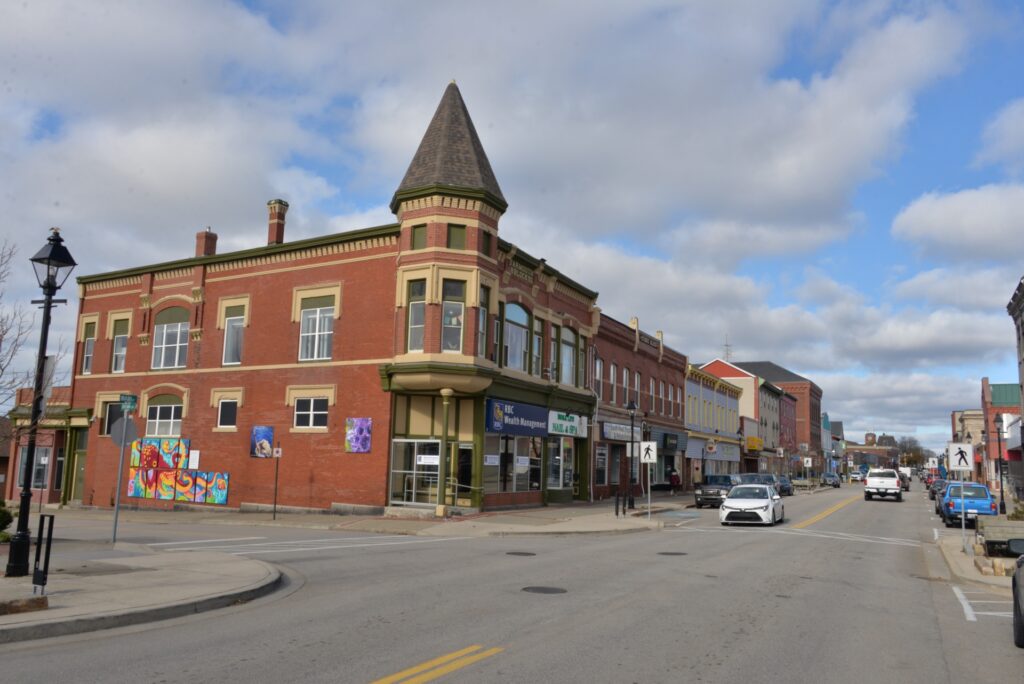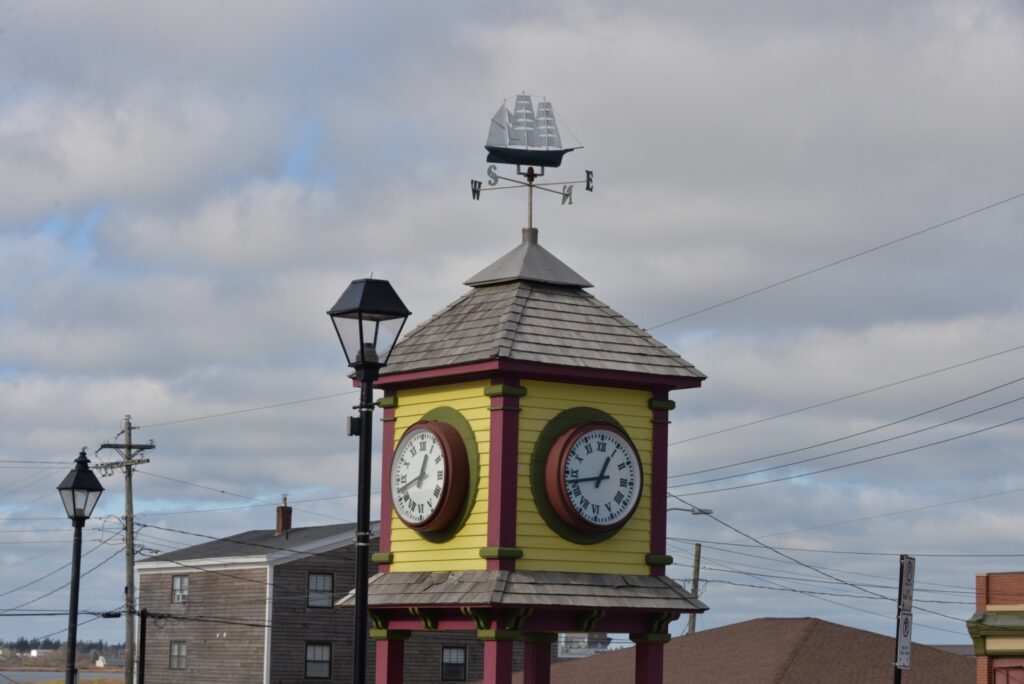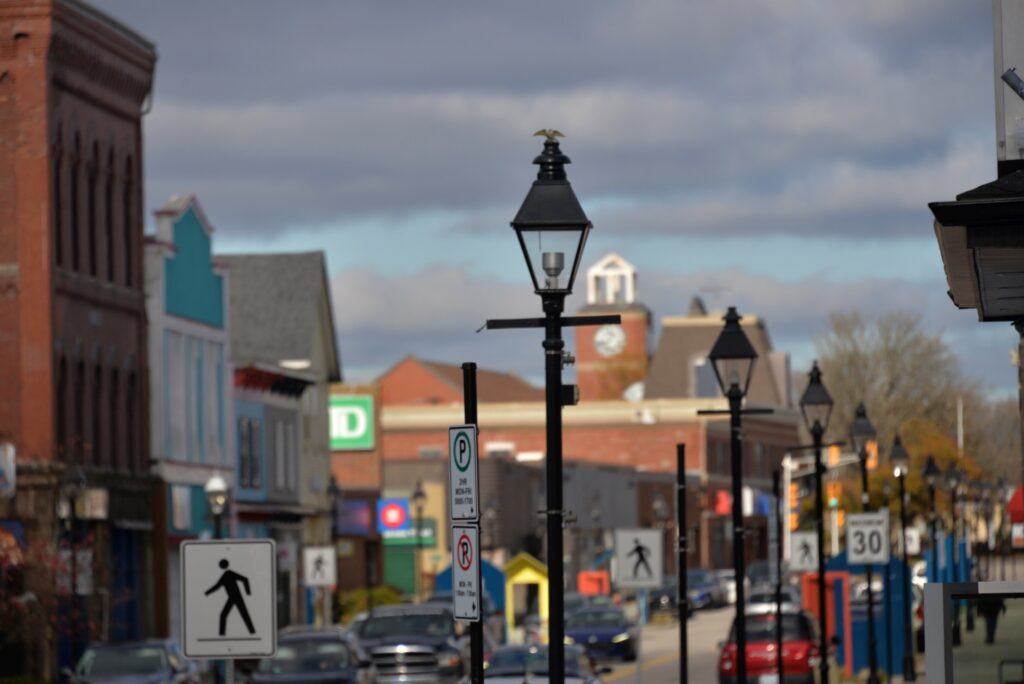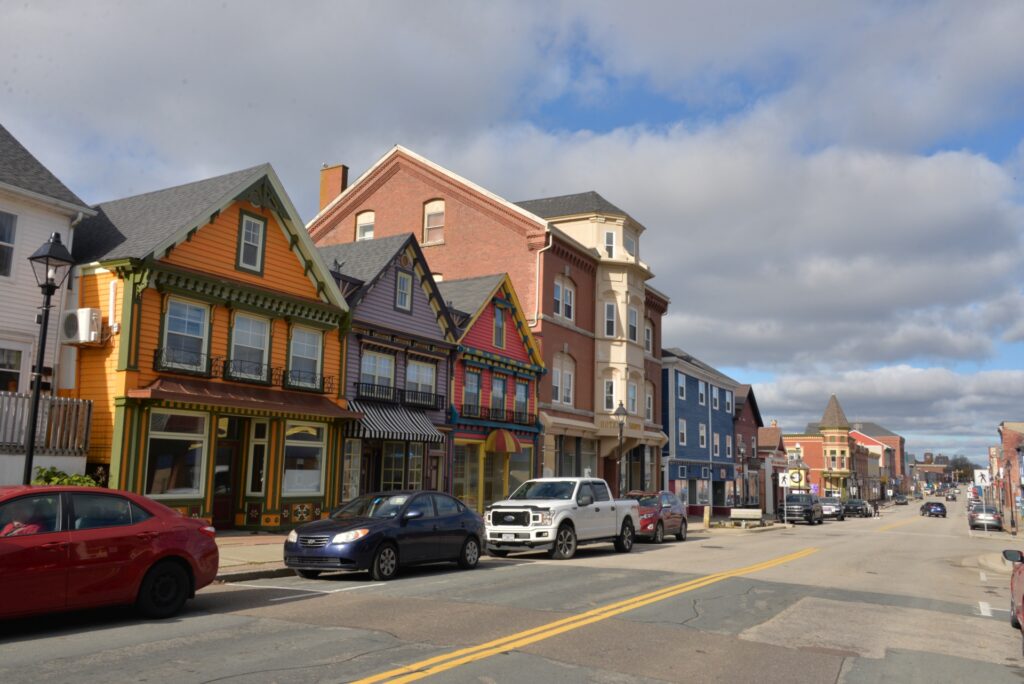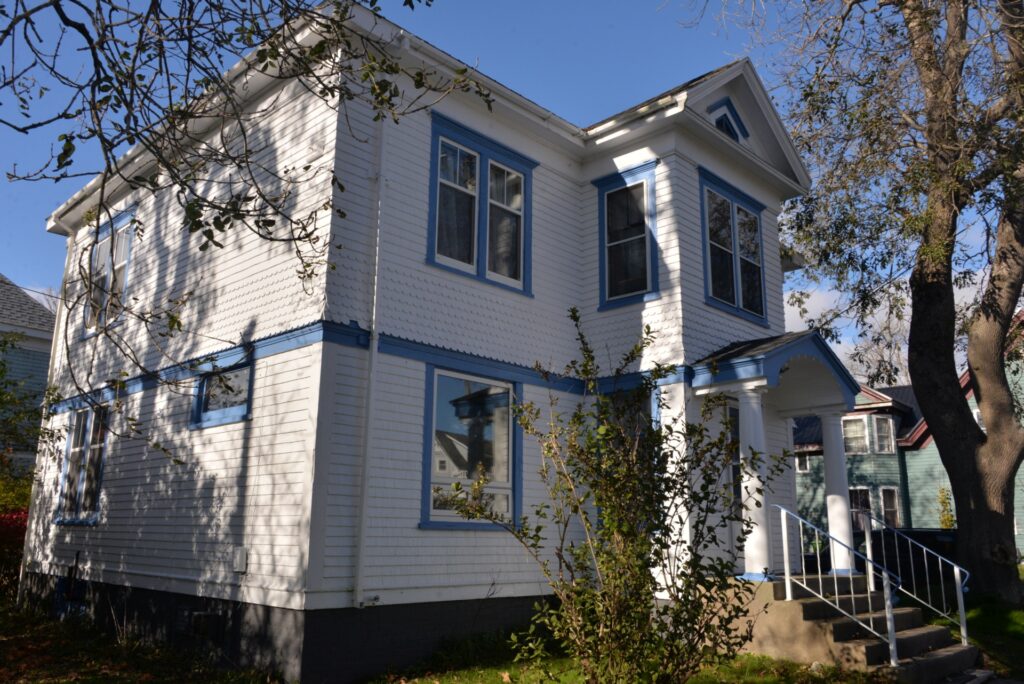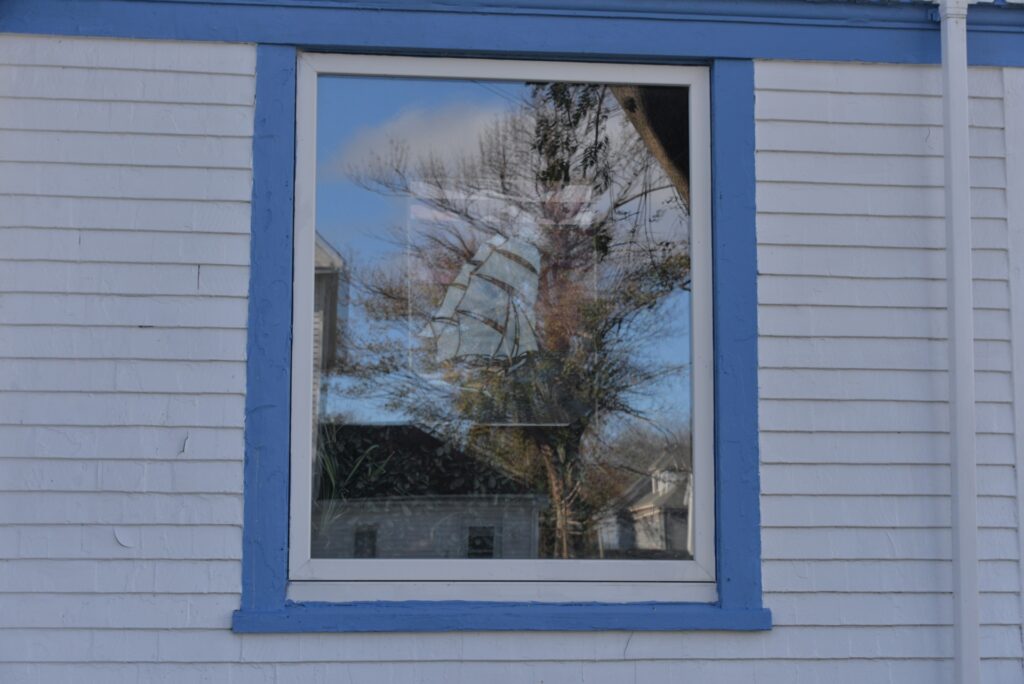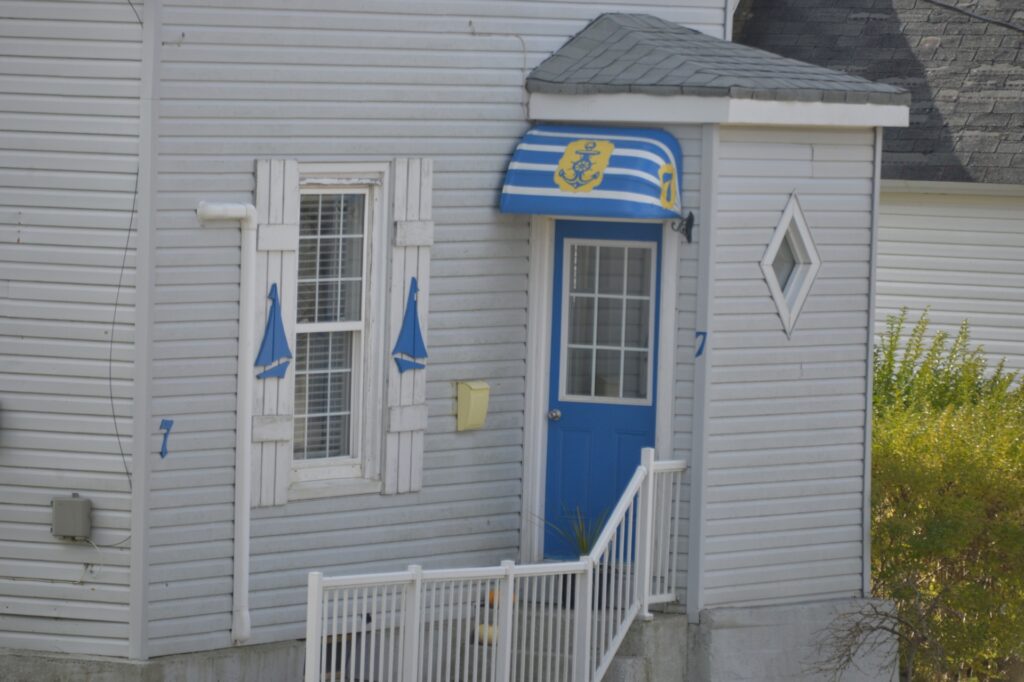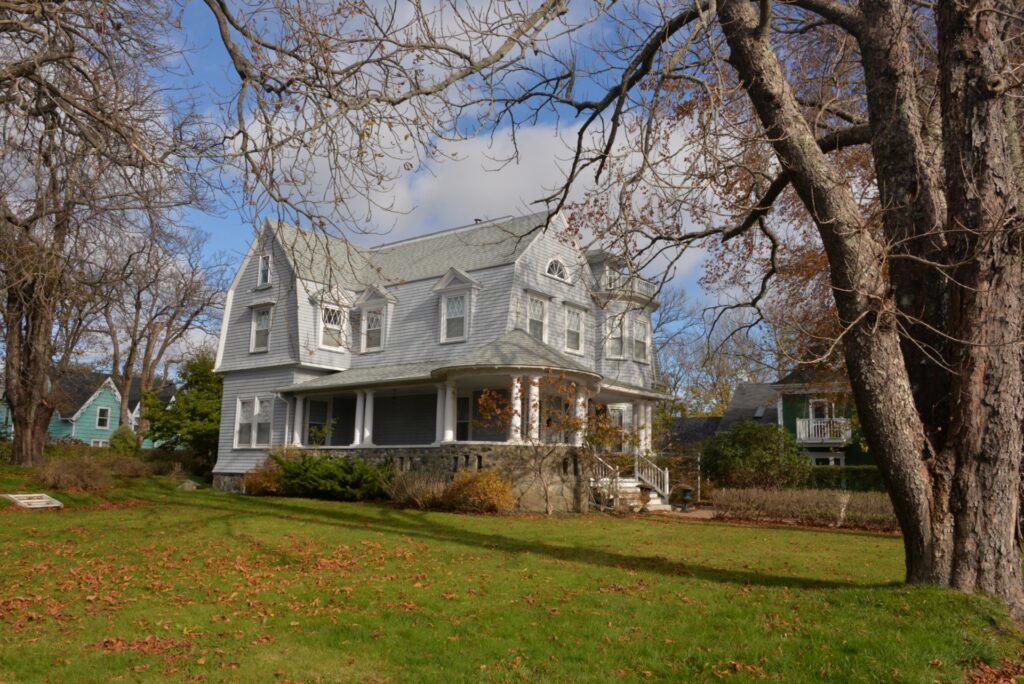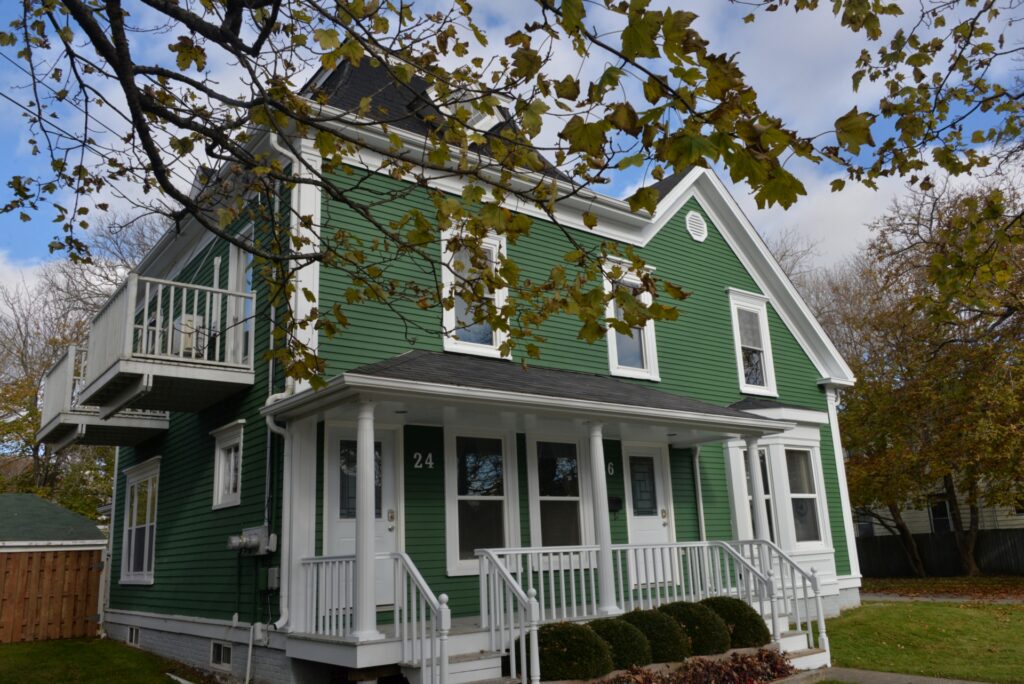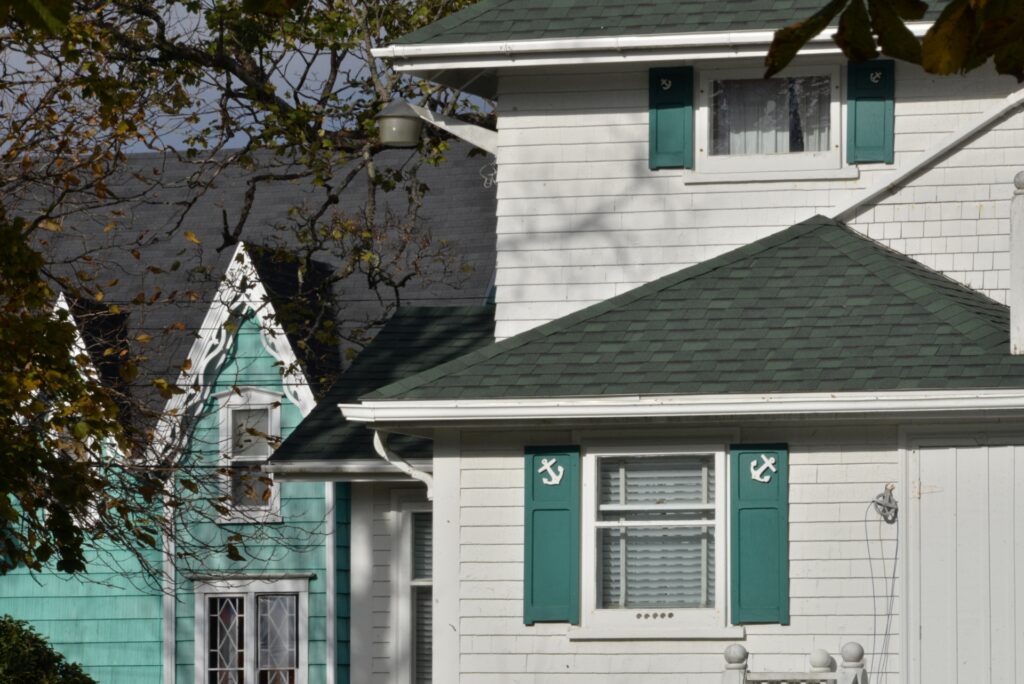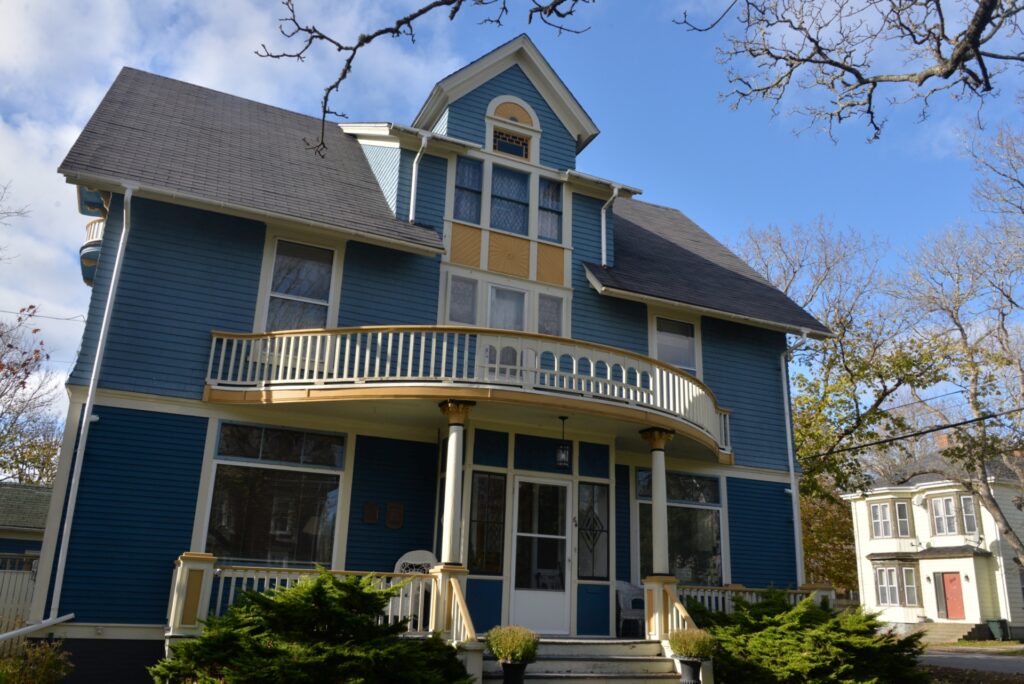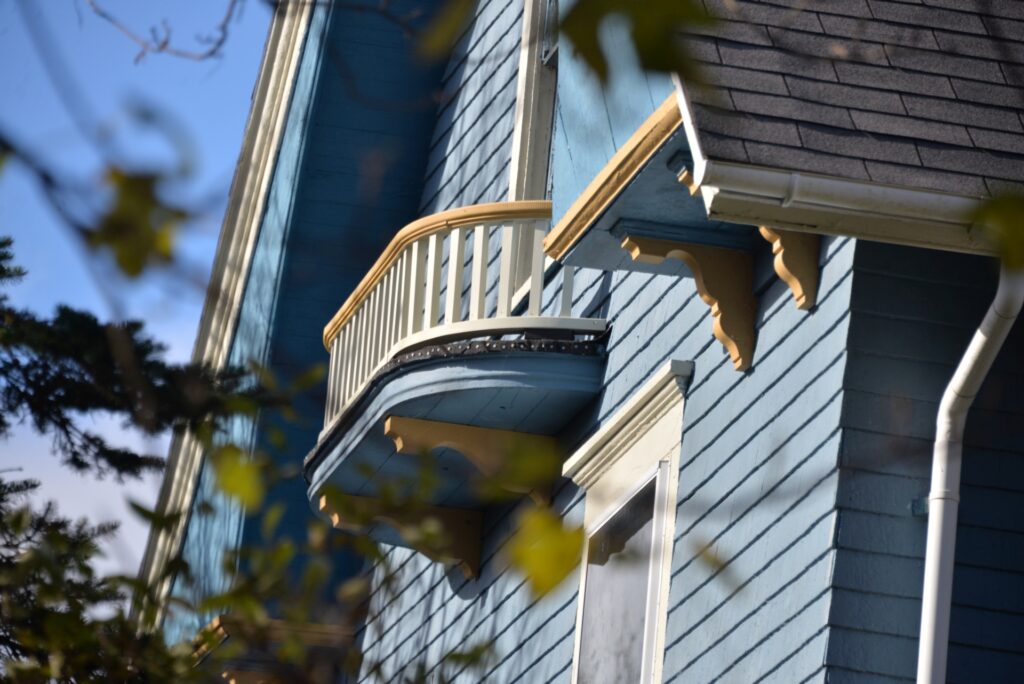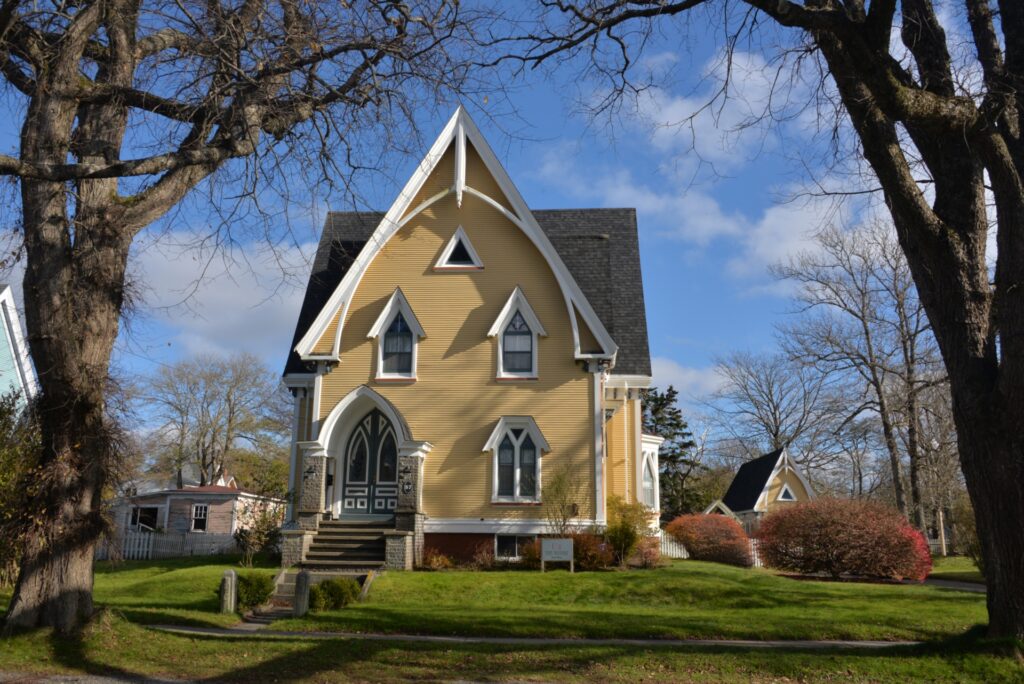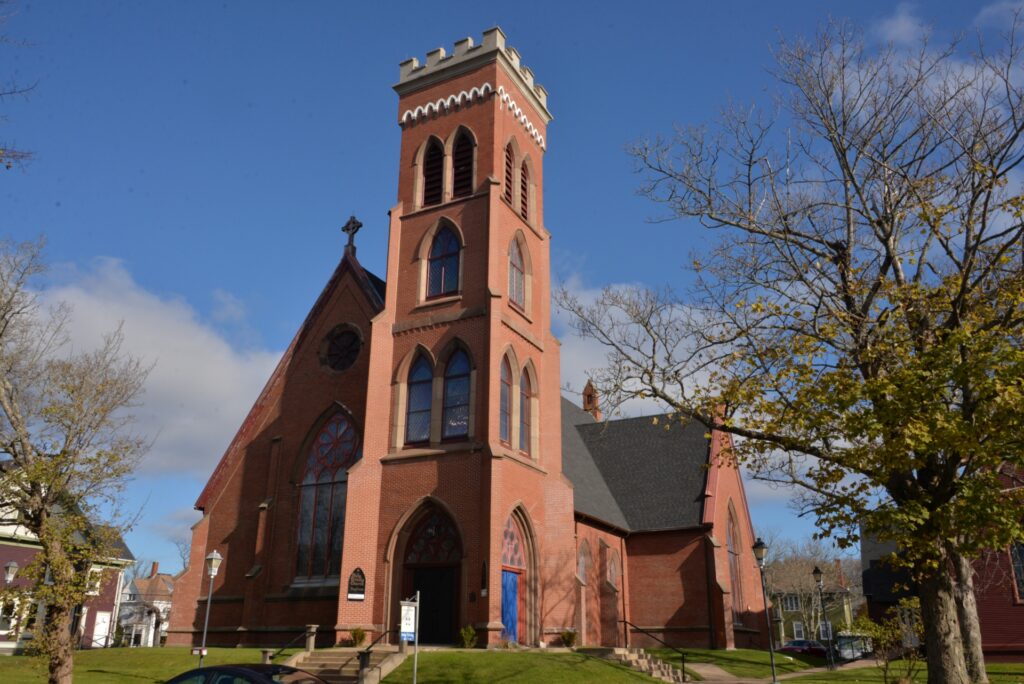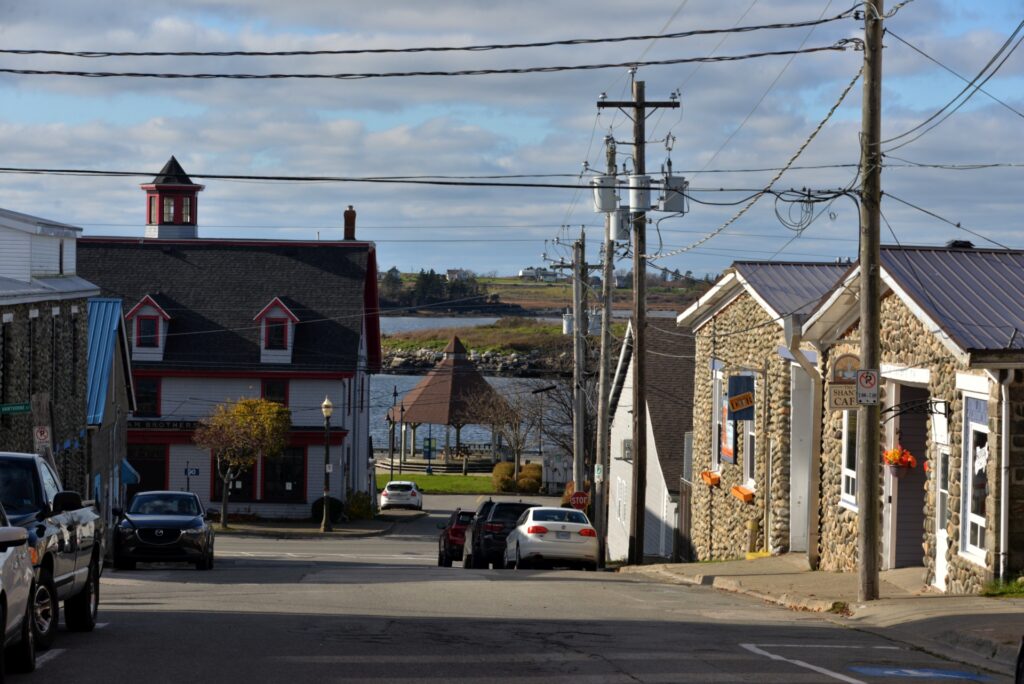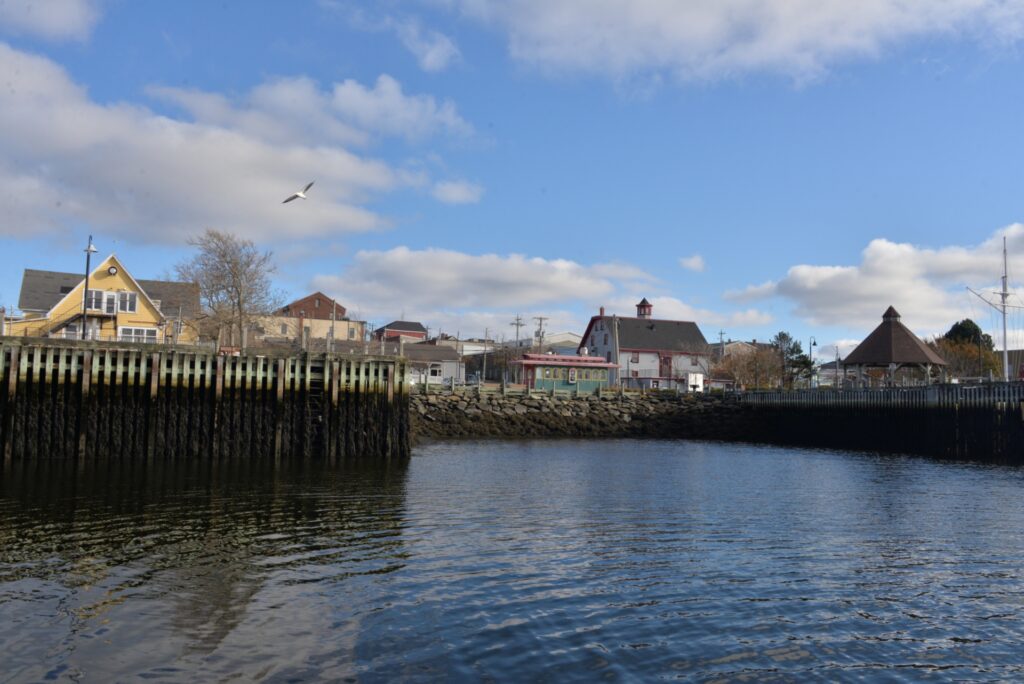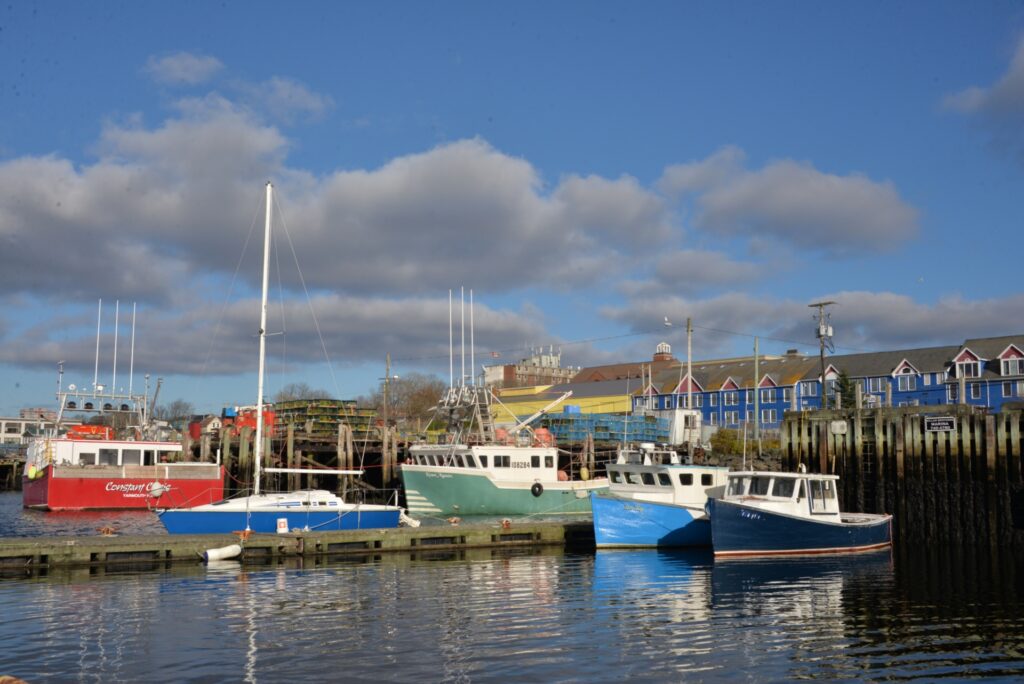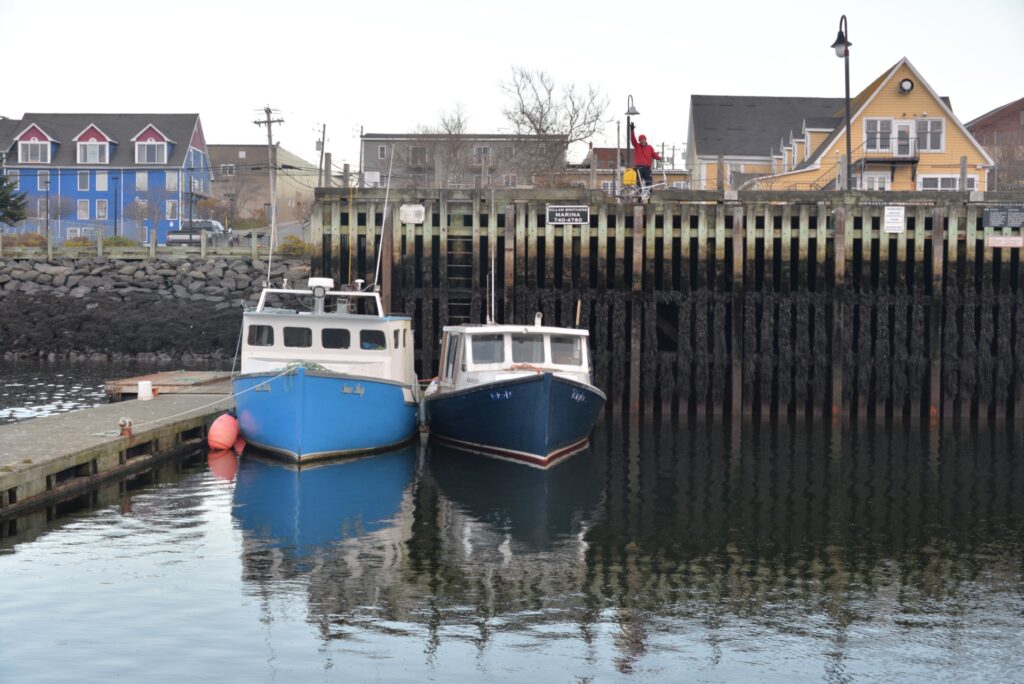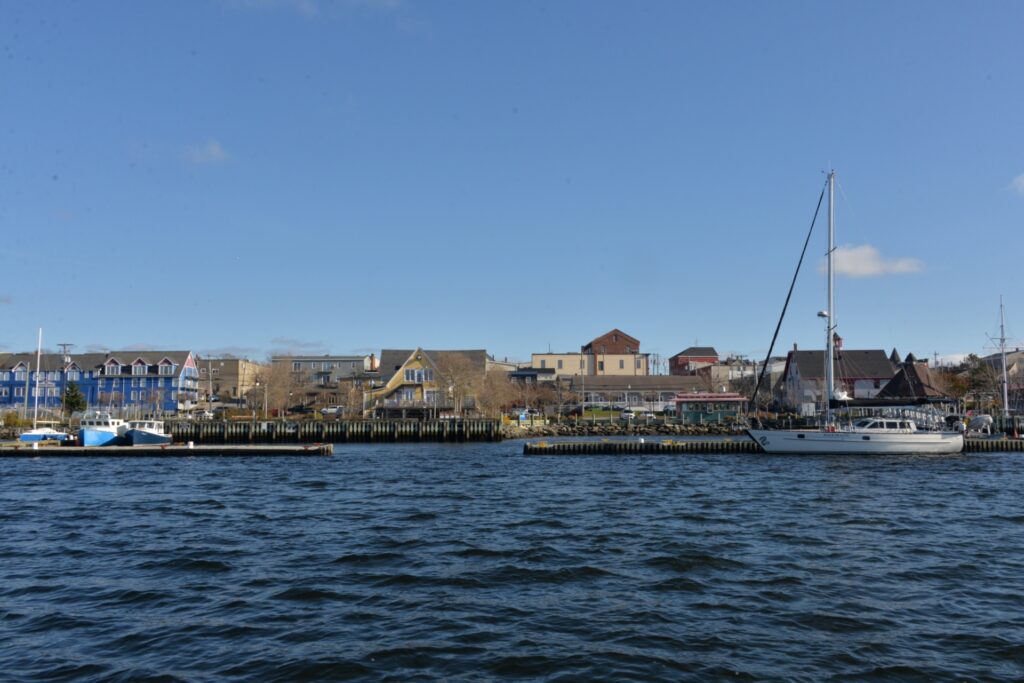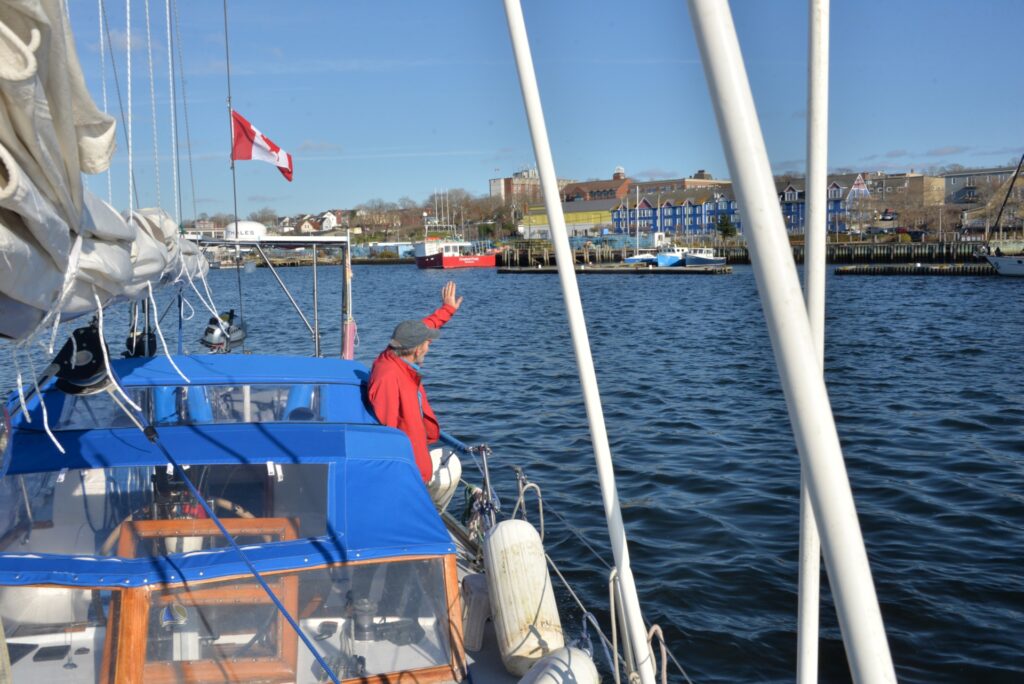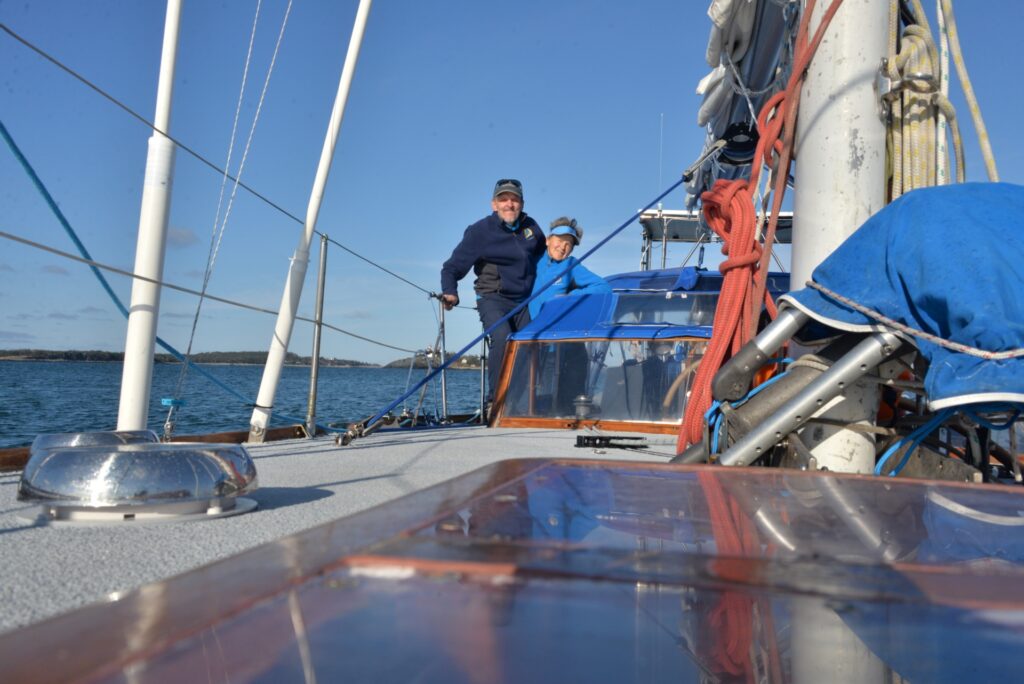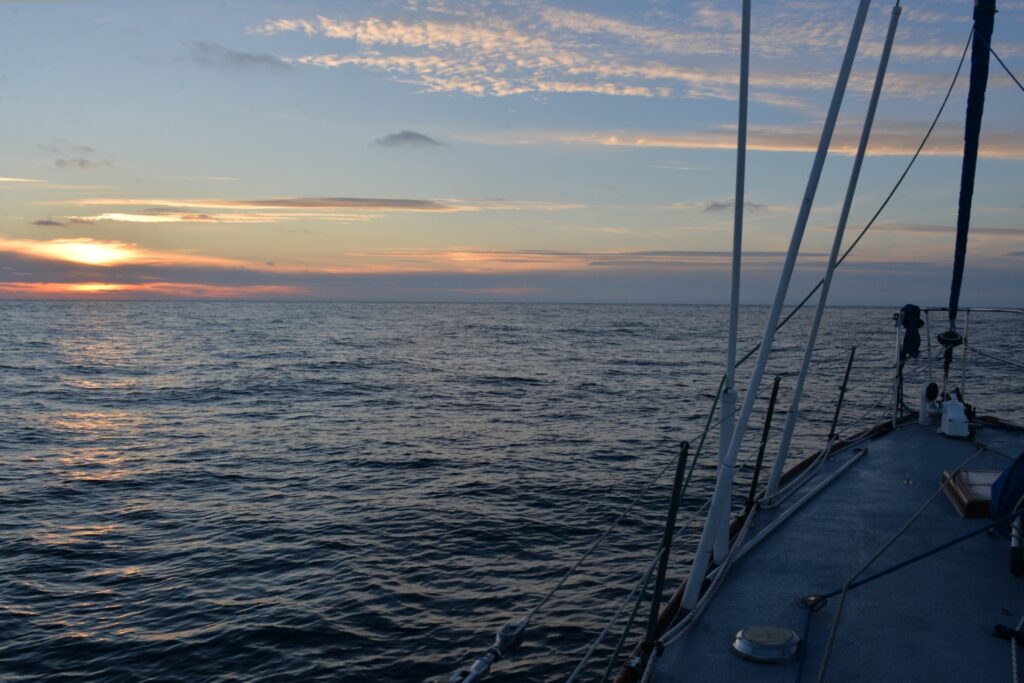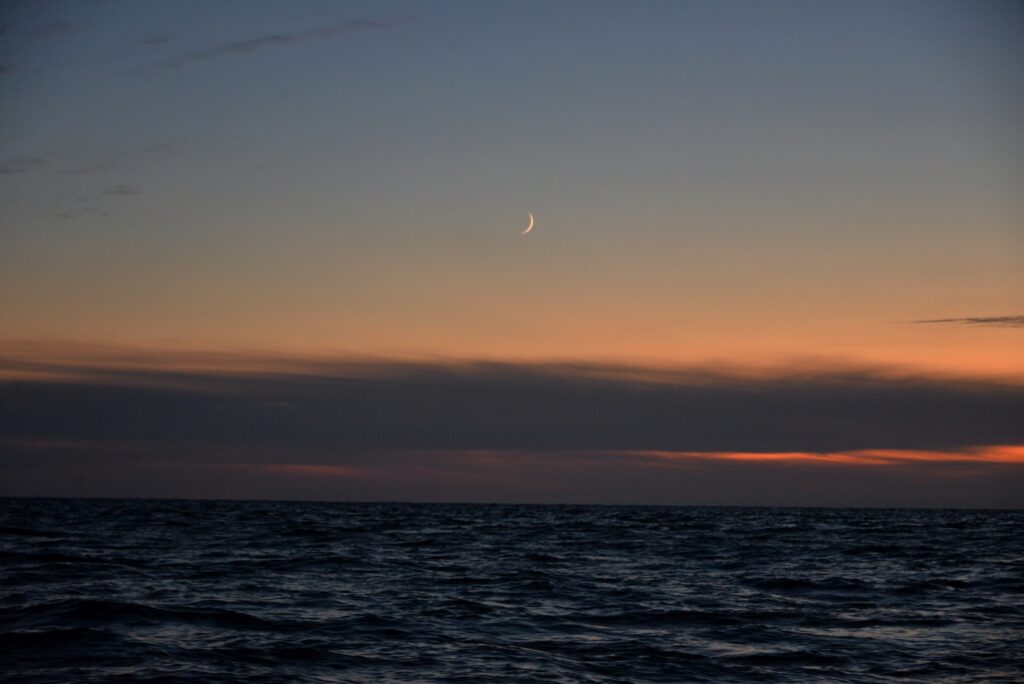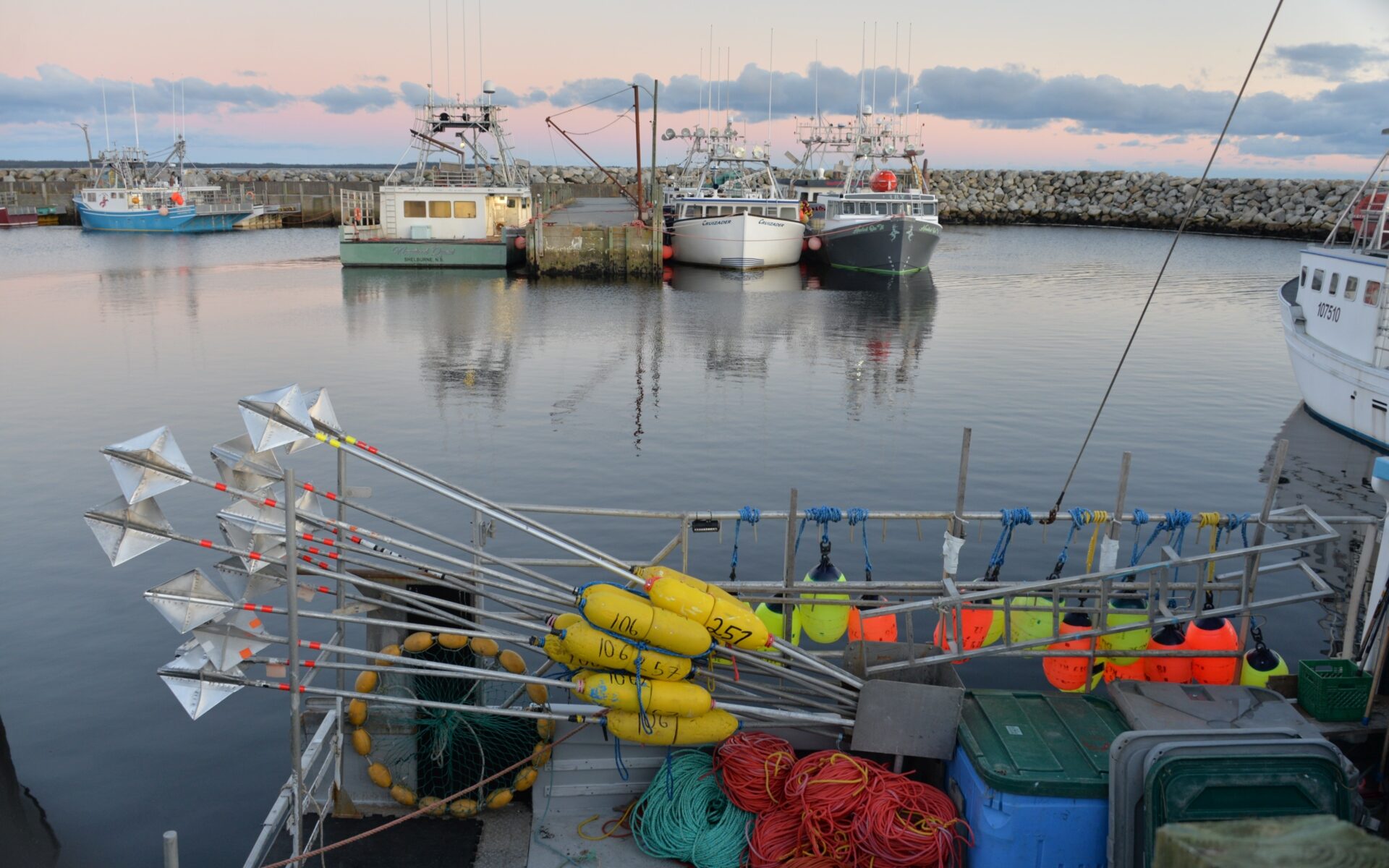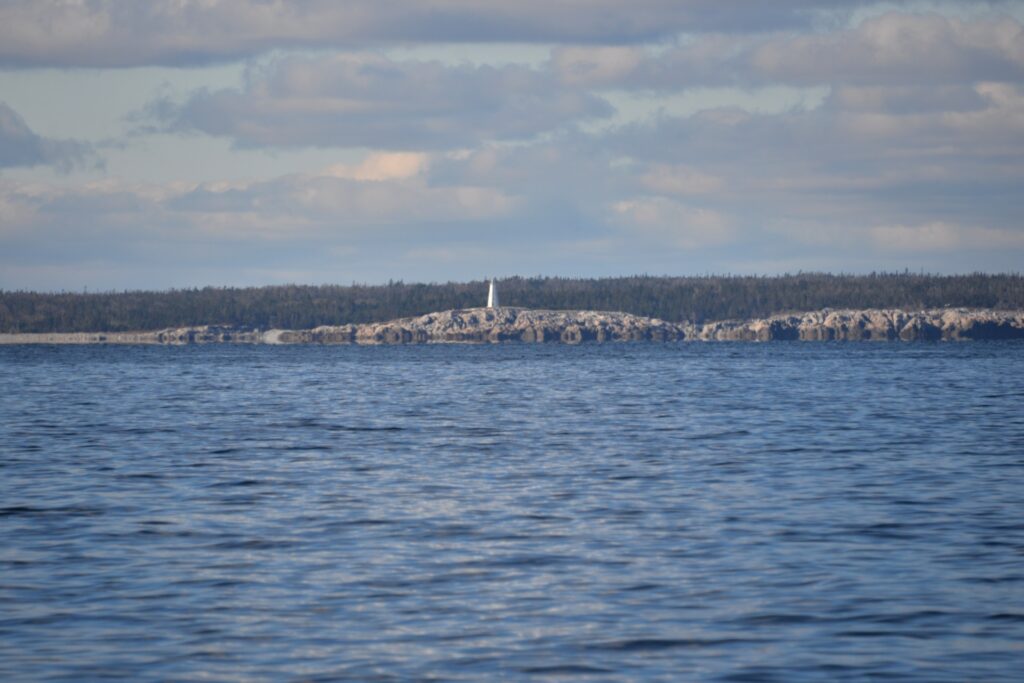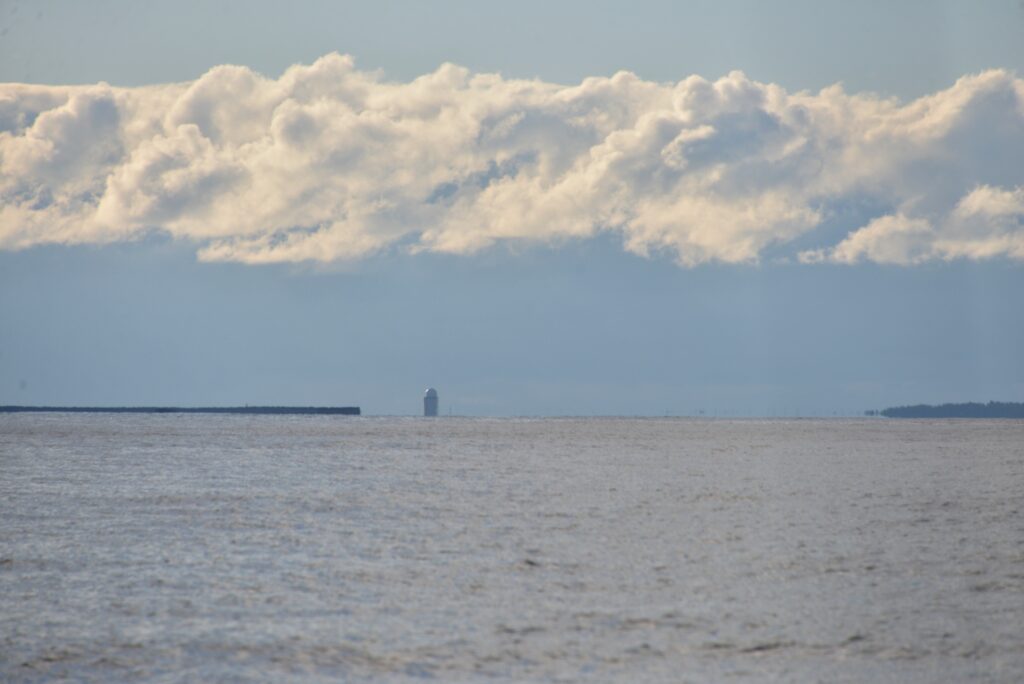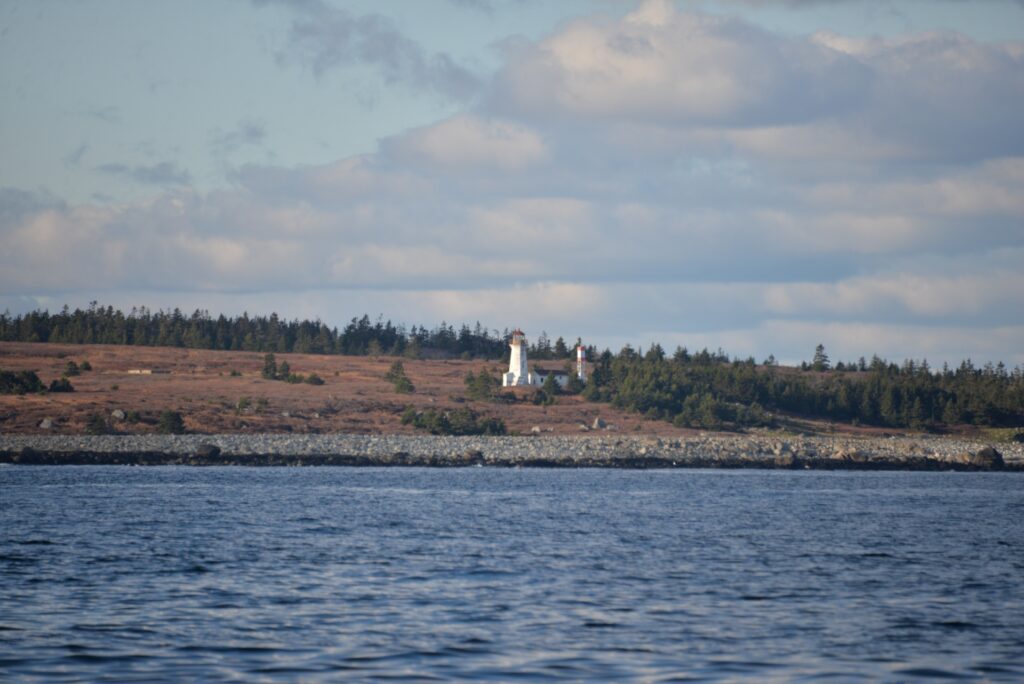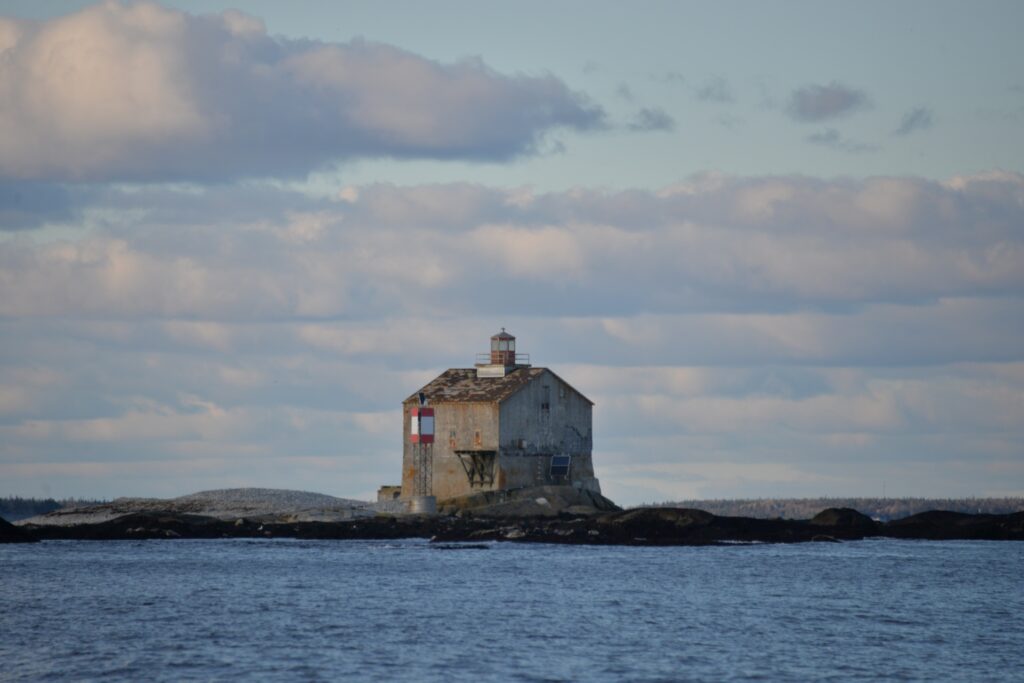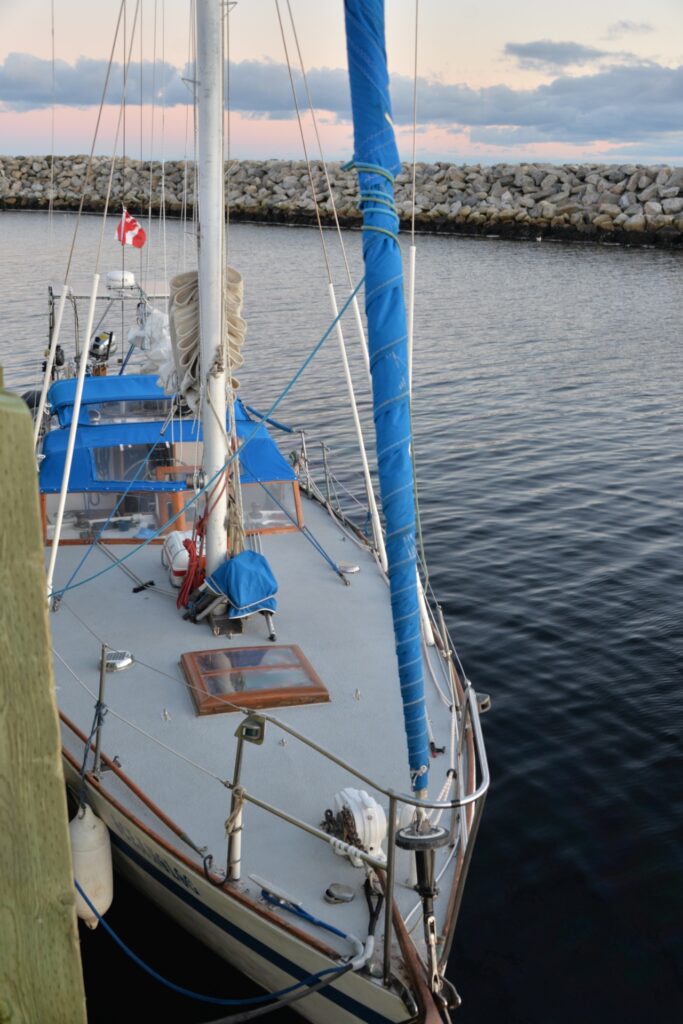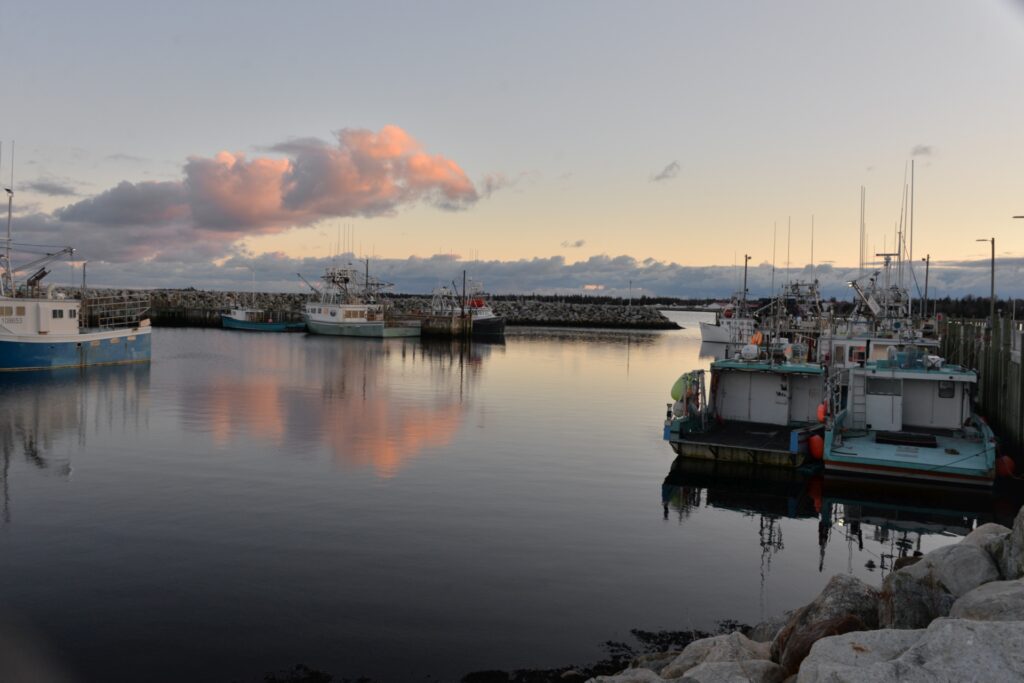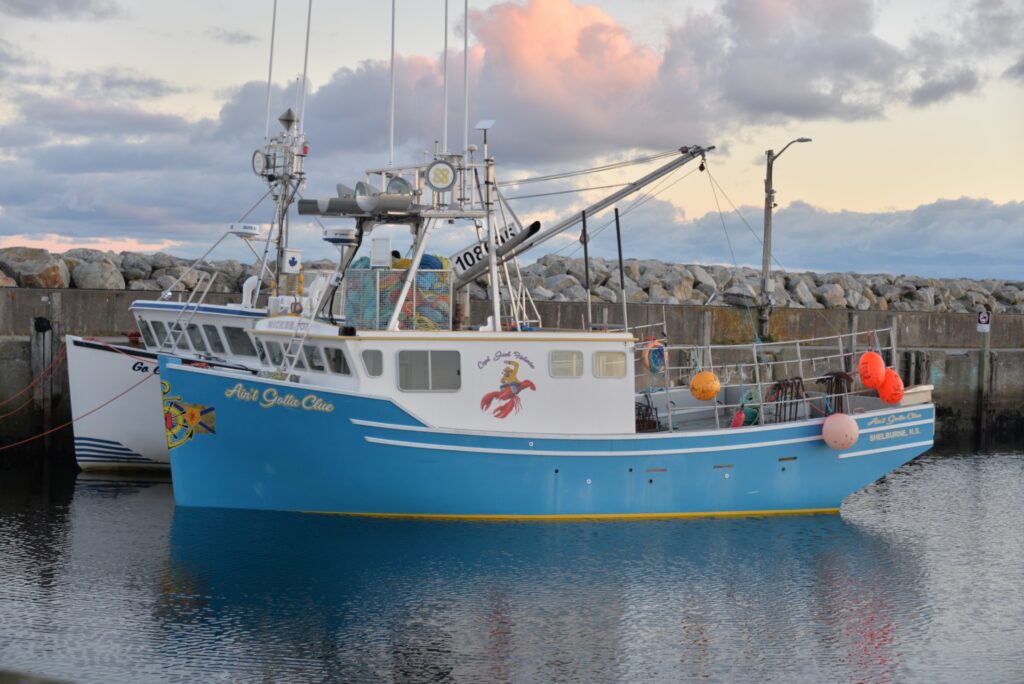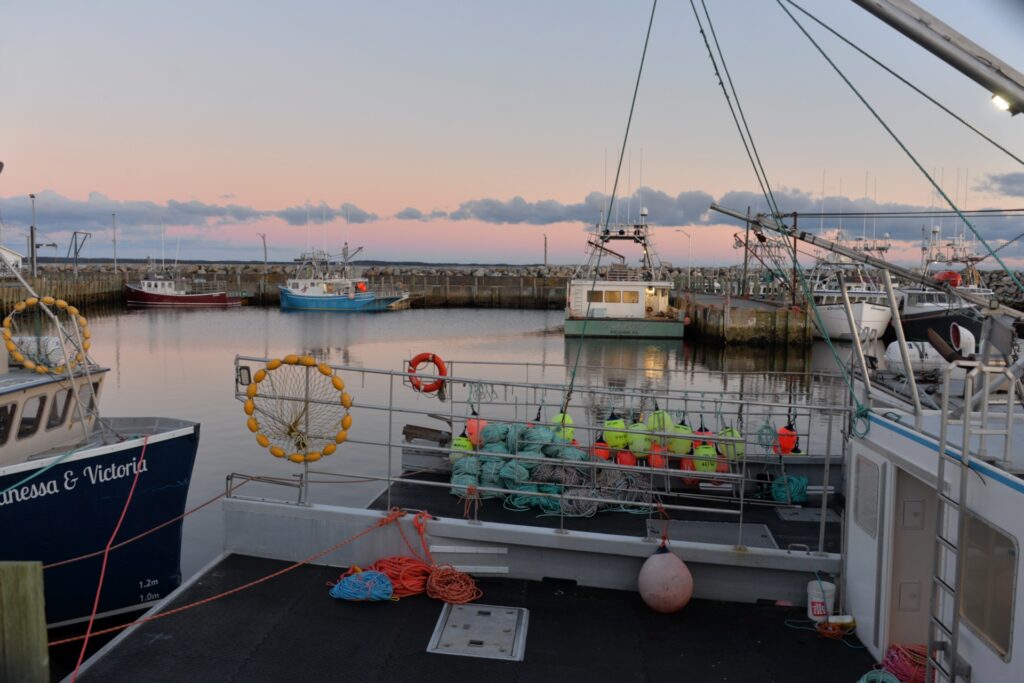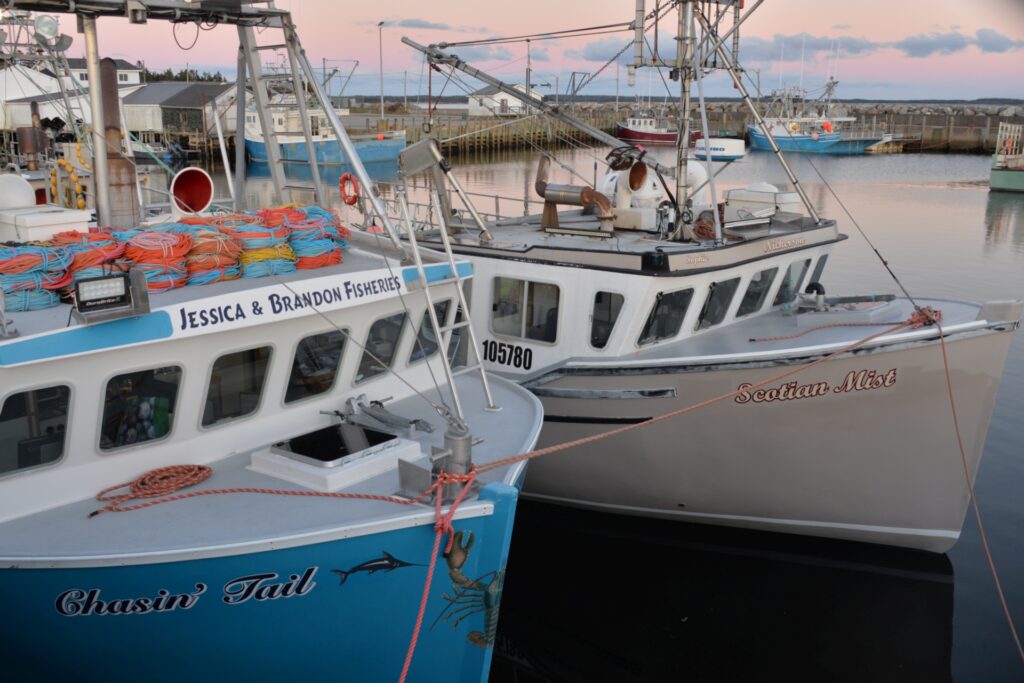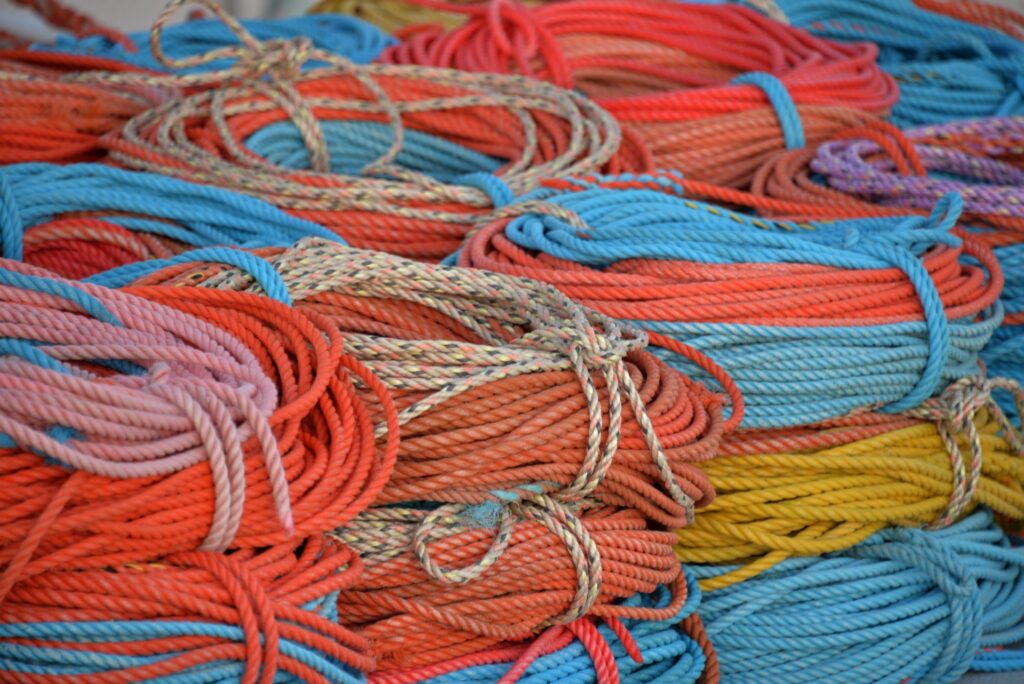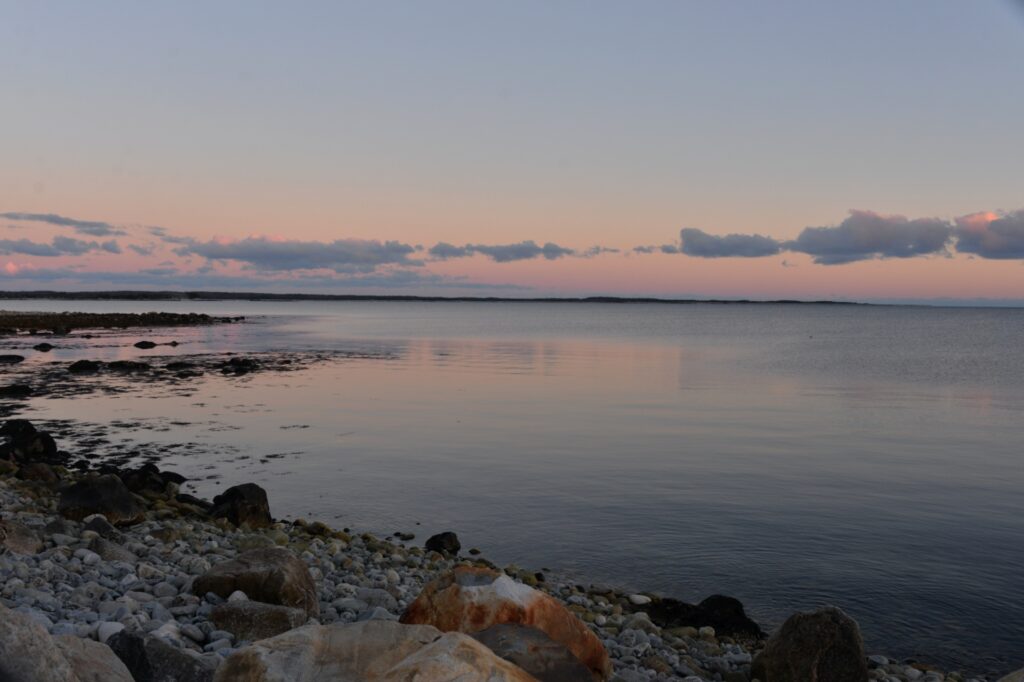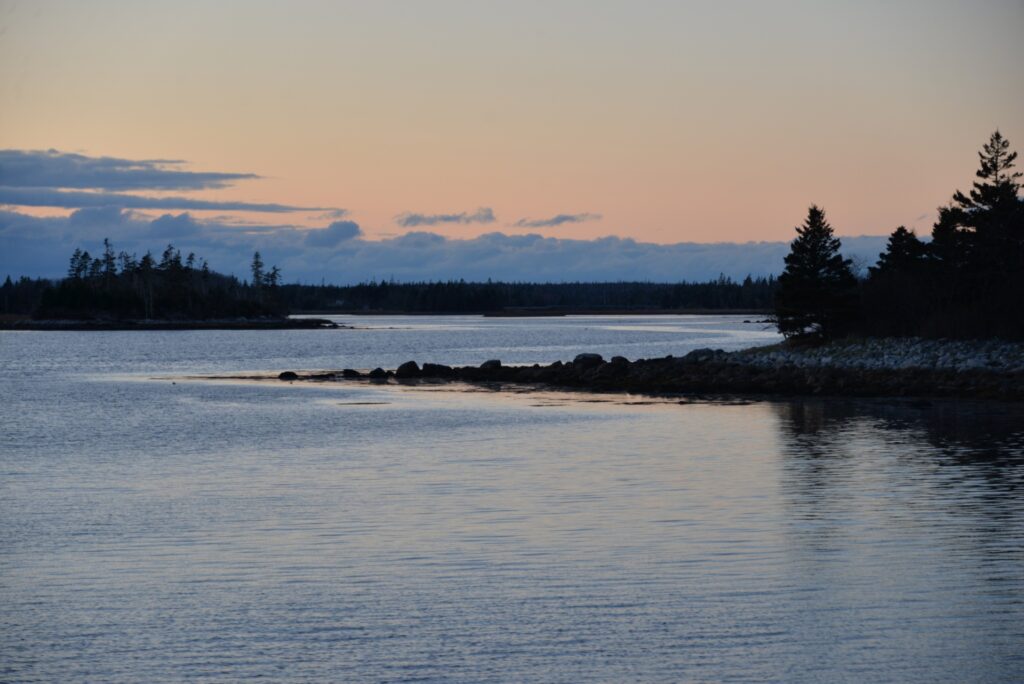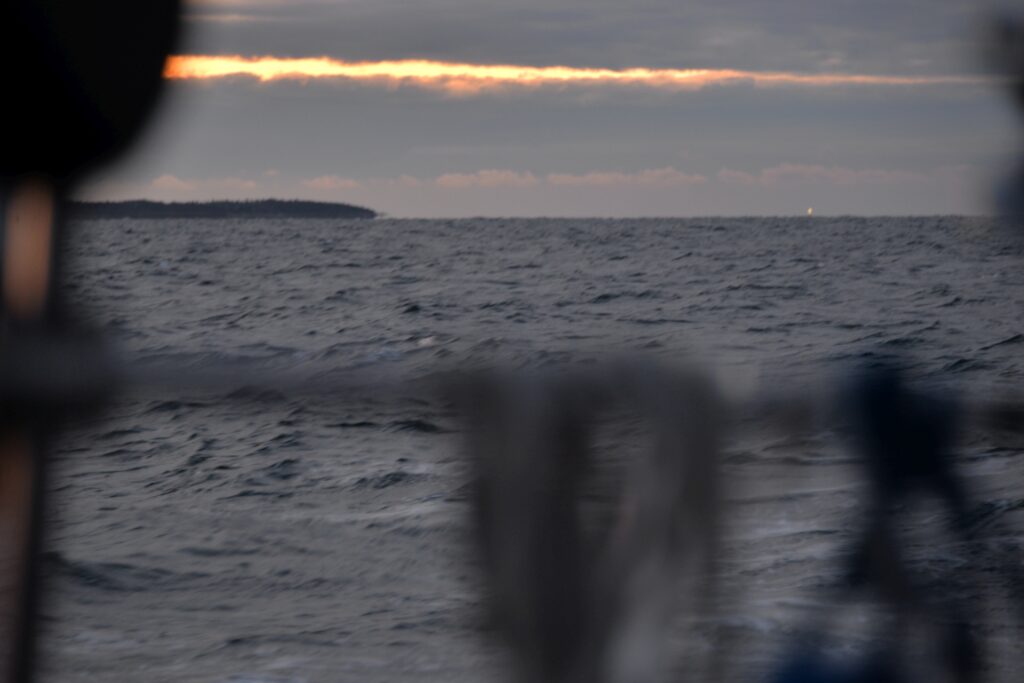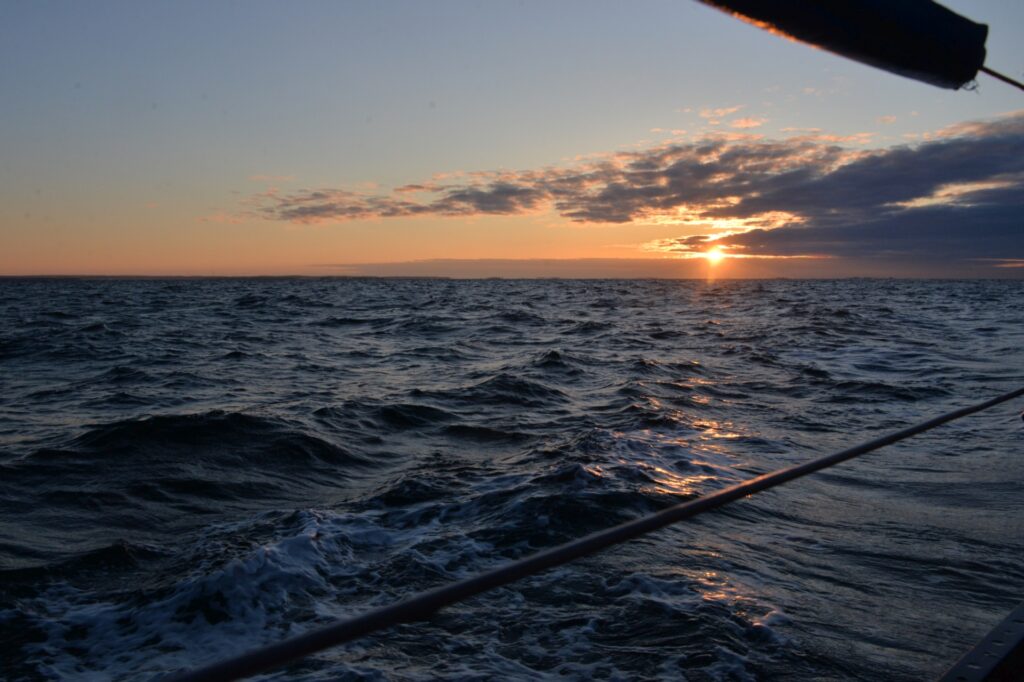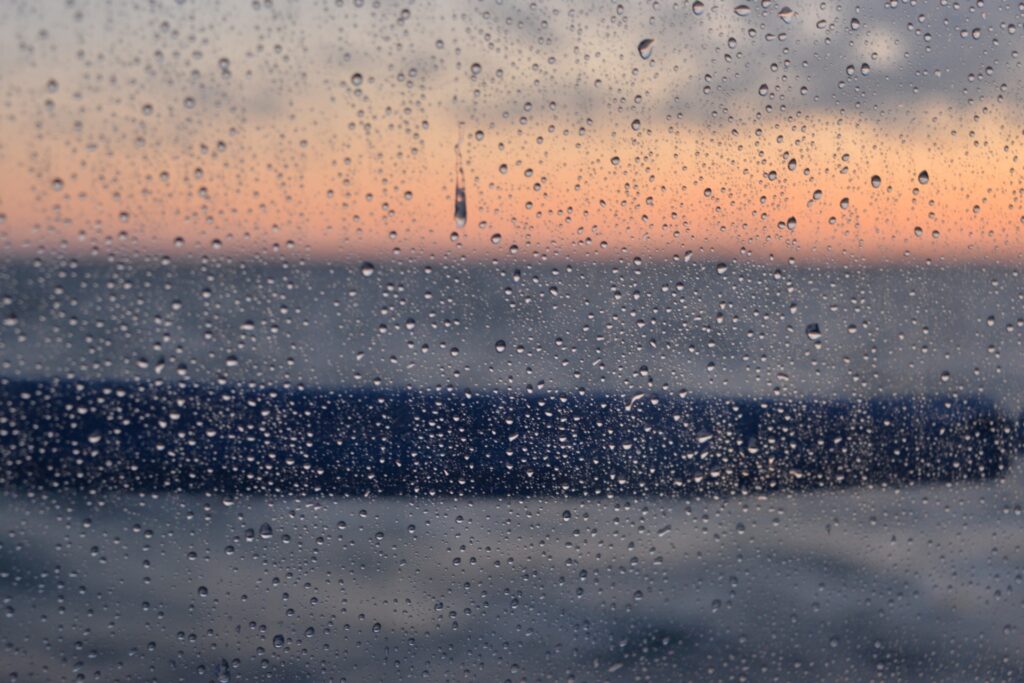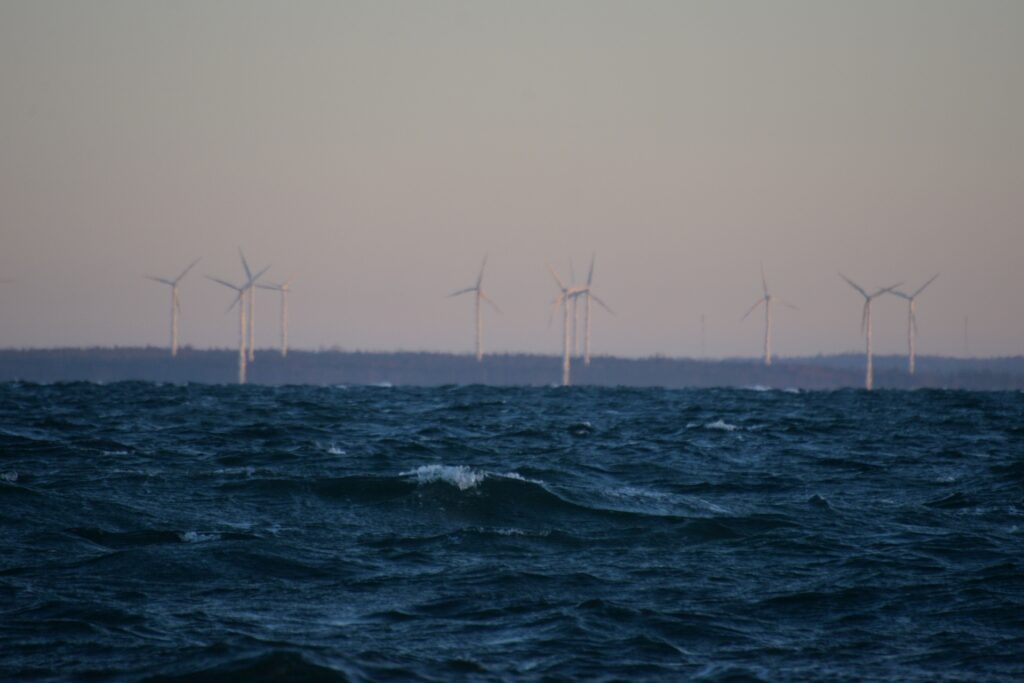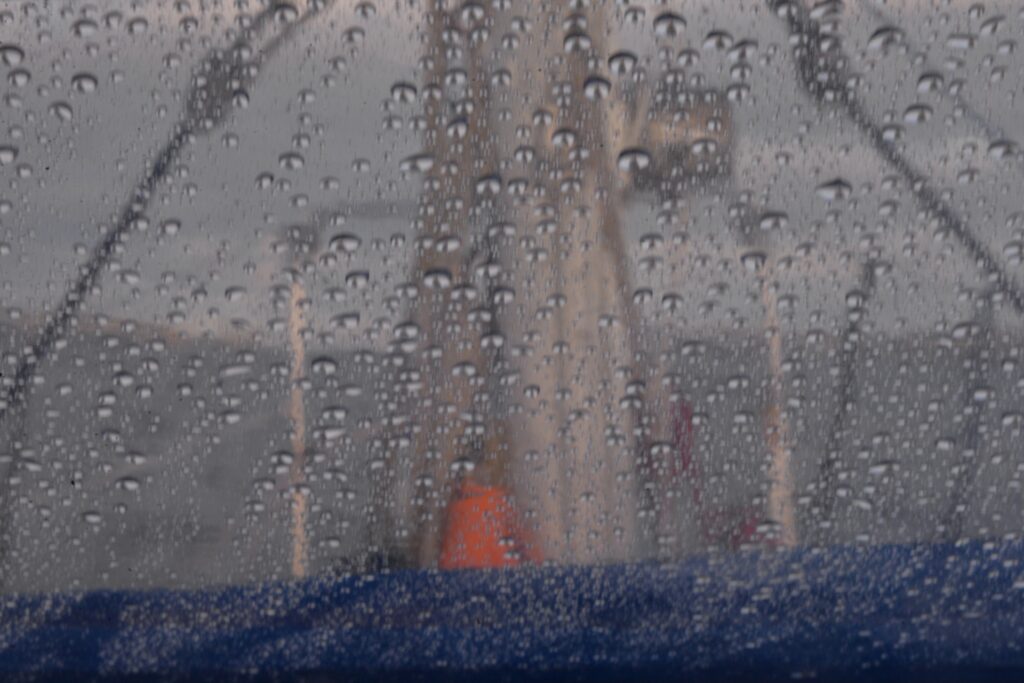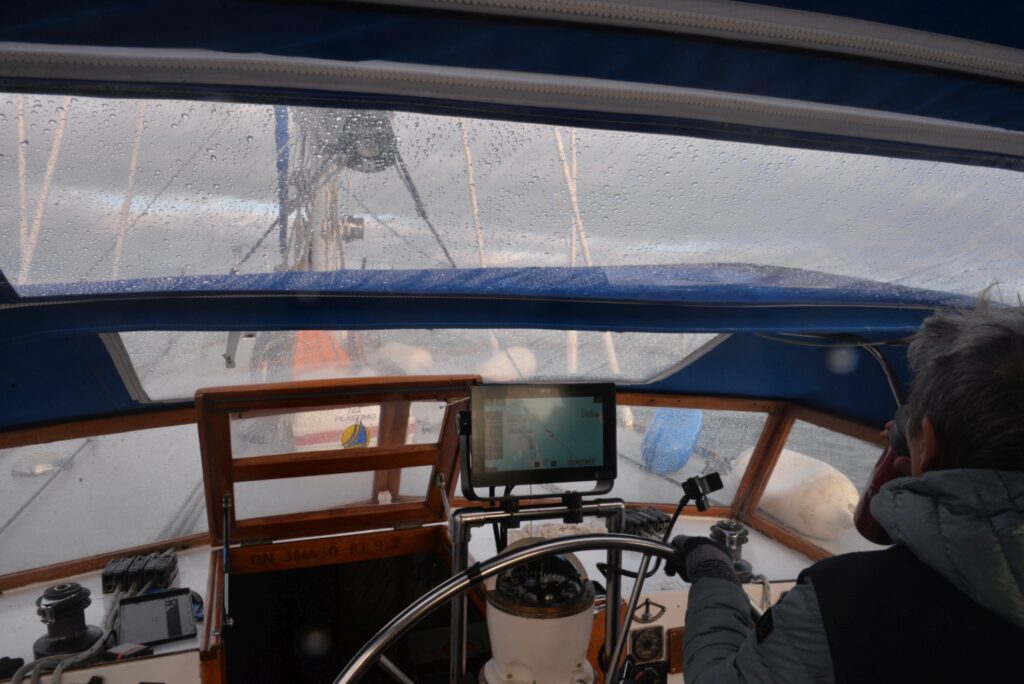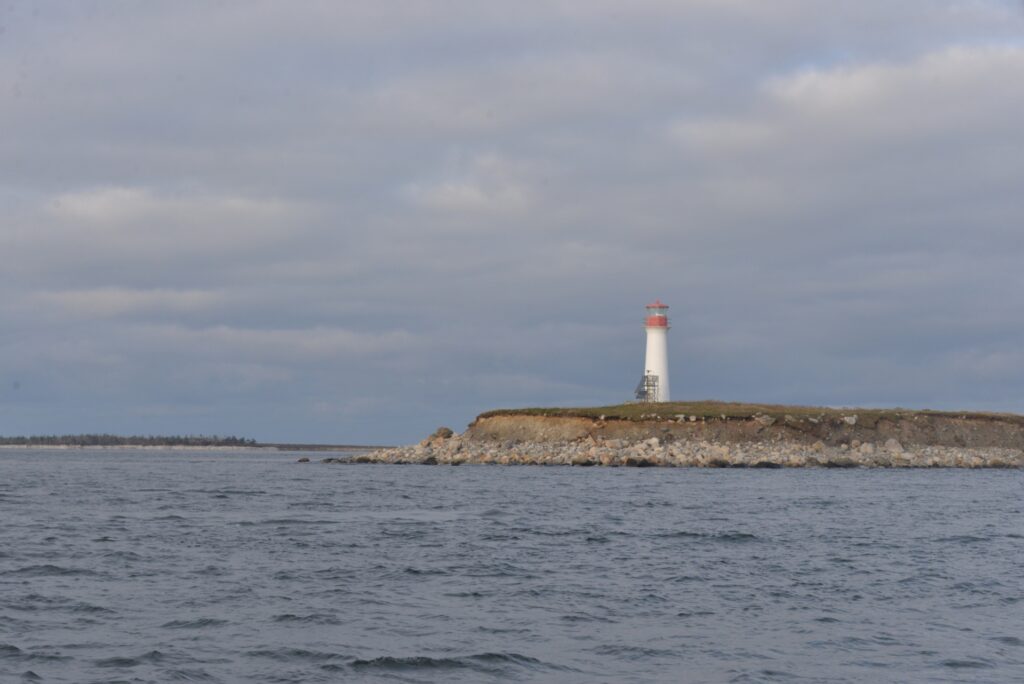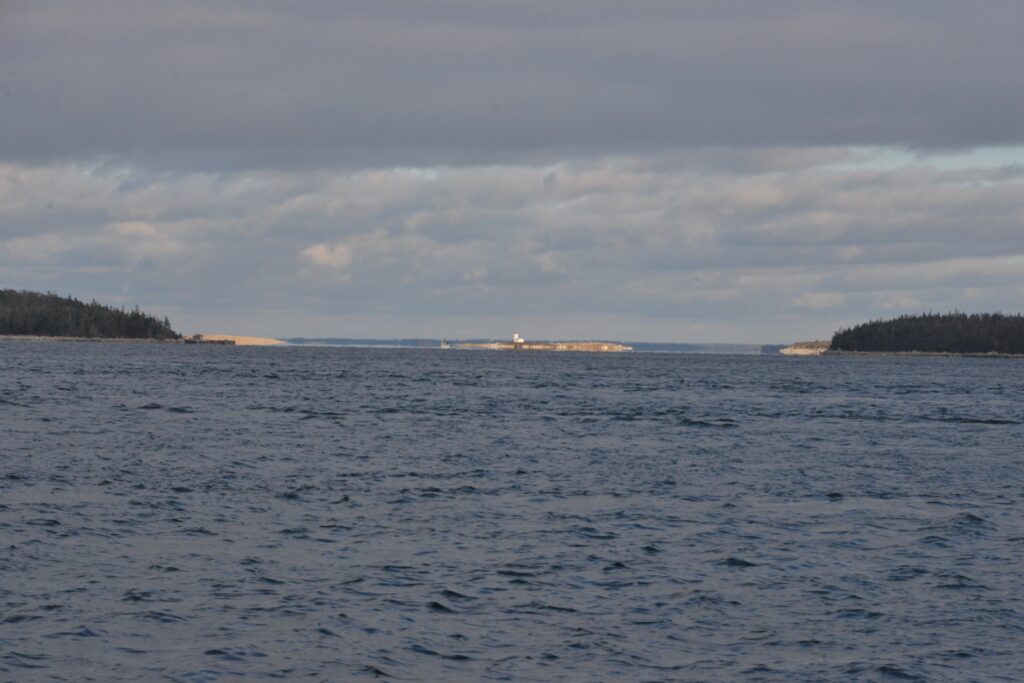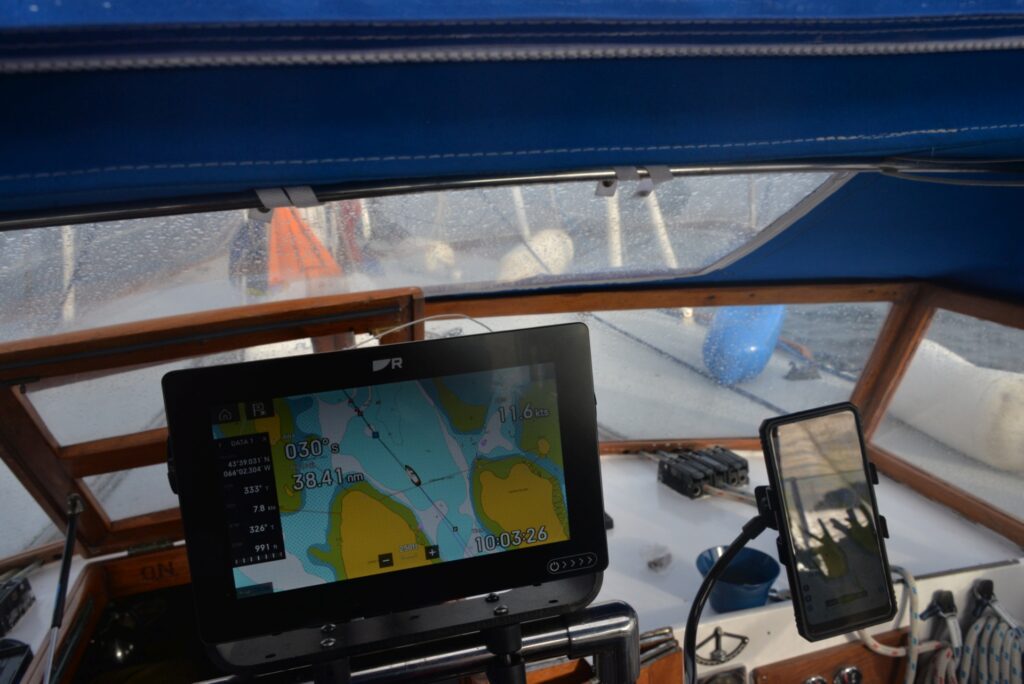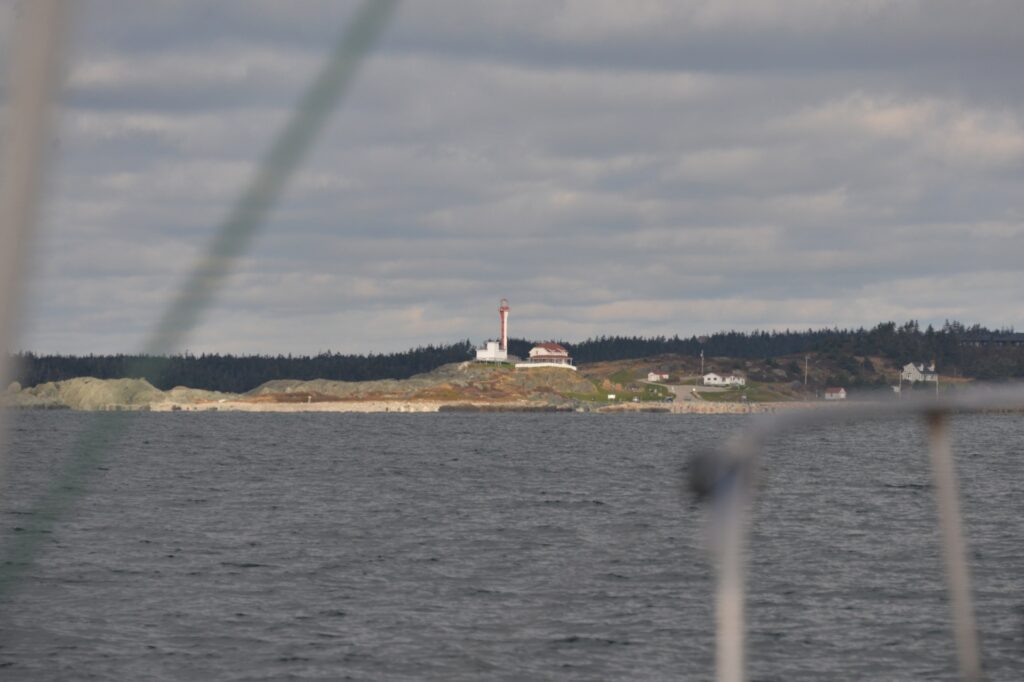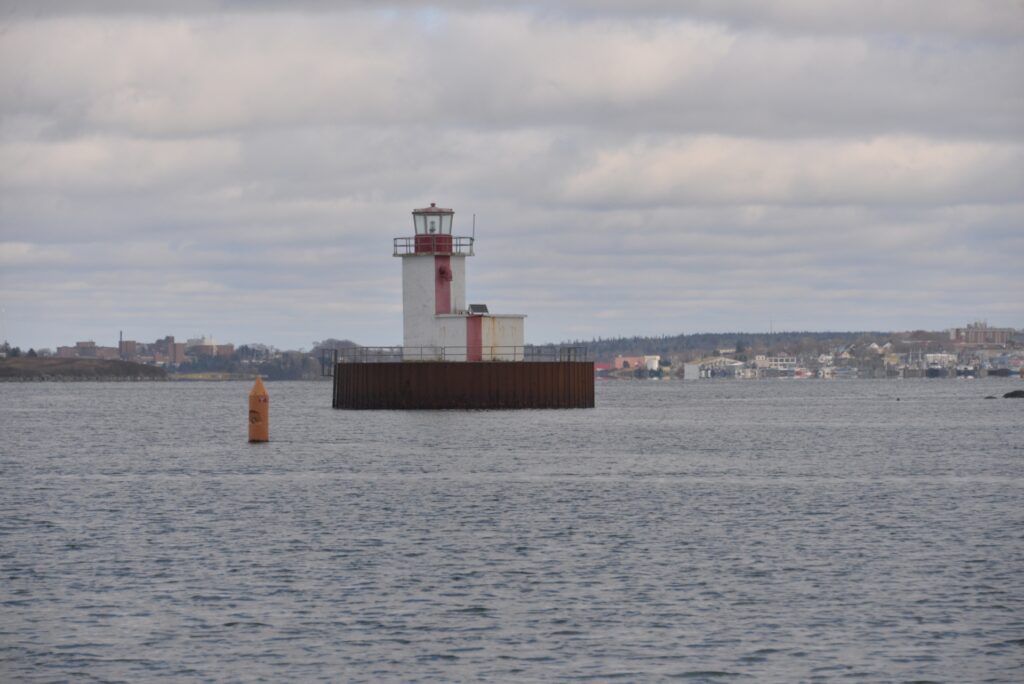Embarking on the 100-mile journey between Yarmouth and Bar Harbor turned out to be a challenging task for both our trusty boat and its intrepid crew. As darkness cloaked the sea, a sturdy northwest wind barged in at 25 knots, unleashing waves up to 2 meters. These sea conditions demanded a strategic shift to motor sailing. We took turns standing watch in two-hour intervals, grabbing precious moments of rest that amounted to no more than an hour. The storm raged unabated through the night until the first light of dawn revealed the silhouette of Mount Desert Island. Yet again, we marvelled at the perks of our stout and lengthy vessel, excelling in stability amidst the tumultuous waves, thanks in no small part to the robust 1-inch thick hull. The genius design by the renowned William Gardner, complete with a sharp bow slicing through the waves, further bolstered our maritime mettle. And the cherry on top? Our engine purred along flawlessly!
Initially set on making port in Bar Harbor, a chat with the harbormaster yielded a change of plans. Bar Harbor, it seemed, was sans customs control at the moment. The harbormaster’s sage advice pointed us toward Northeast Harbor Marina. Not a big deal, just an additional 10 miles through a barrier of lobster traps. When we were going along the Island, the speed went down to 3 knots. It surprised us, we decided it was a tide current against us. But gradually speed diminished to 1 knot, we were barely moving. At that point, we began to worry. We were afraid something was wrong with the engine. Or prop. Or something else. But then we noticed a rope following us along the boat. You can guess what it was. We were towing lobster trap! We knew that there were a lot of them here and we did our best to avoid them. But… We caught it by the keel and after a backward maneuver, we released the trap and got full speed.
In the Northeast Harbour Marina, we underwent customs control and got a berth on the dock at the friendly marina’s office. We are in the United States of America!
After resting a bit our weary sea legs, we decided to explore the surroundings before darkness fell. For more than a century, Northeast Harbor on Maine’s Mount Desert Island has been one of the most exclusive summer retreats in the world. During the 1880s and 1890s, families such as the Rockefellers, Pulitzers, Fords, Morgans, Astors and Vanderbilts – many of whose descendants still come here – built grand homes here.
From the very first glance, we could see how stylish this little town is. There are houses of various sizes and shapes, but all of them have one main thing in common: they are designed in Shingle Style and finished with wooden shingles. Behind the apparent simplicity, one can guess the thoughtfulness of every detail in the complete absence of kitsch.
